




































Students considering a future as an engineer, metallurgist, diesel mechanic or electrician were all present at the Queensland Minerals and Energy Academy’s (QMEA) STEM and Trades workshop at Moura State High School in late March.
The QMEA workshop was designed to give students a taste of science, technology, engineering and maths (STEM) and trade careers available to them in the resources sector.
The QMEA is the education arm of the Queensland Resources Sector (QRC).
QRC Education, Skills and Diversity police director Katrina-Lee Jones said the hybrid workshop gave students exposure to professional and trade roles in the industry.
“The Year 10 students spent half the day exploring STEM concepts relating to the lifecycle of a mine, for example connecting the study of geology with mineral exploration,” Ms Jones said.
“They had real-world experience with trade activities linked to the types of tasks mechanics or electricians might perform on a mine site.”
The workshop was delivered in partnership with Anglo American, which had some team members present to share their knowledge and career experiences with the students.
Dawson Mine general manager Matt Stevens said workshops like this could provide the critical point for students as they decided their subjects for the final two years of school.
“I hope the workshop has given the students some greater insight into what it is like to work in a professional and trade capacity on a steelmaking coal mine site,” he said.
“As we re-imagine mining to improve people’s lives and meet the growing demand to provide materials essential for daily life, it’s clear there will be plenty of rewarding career opportunities for these students in the future.”
In 2025, the QMEA is celebrating 20 years of inspiring students to follow a trades or science, technology, engineering and maths (STEM) study pathway with a focus on the many rewarding career opportunities in the resources sector.
For more information about resources careers visit: shapeyourfuture.com.au

Telephone: 07 4863 5050
Address: 5-9 Hempenstall Street, Kawana, QLD 4701
EDITORIAL
Gregor Mactaggart Editor
E: gregor.mactaggart@CQToday.com.au
Matthew Pearce Journalist
E: matthew.pearce@CQToday.com.au
ADVERTISING
Cheryl Altouvas Advertising Sales
E: cheryl.altouvas@GladstoneToday.com.au
Lacy McDonald-Hearn
Advertising Sales Executive
E: lacy.mcdonaldhearn@CQToday.com.au
Lou De Jager
Advertising Sales Executive
E: lou.dejager@CQToday.com.au
Gladstone Area Water Board (GAWB) is upgrading its 80-year-old treated water pipeline at Wurdong Heights, with end-of-life replacement works now underway.
GAWB chief executive officer Darren Barlow said construction was now in full swing with more than three kilometres of the ageing 16.7-kilometre pipeline to be replaced over the next three months,between Clayton and Hughes roads.
“As a bulk water supplier for the region, it’s critical we maintain our assets and replace ageing infrastructure, so we can continue to provide our customers with safe and reliable water supply,” Mr Barlow said.
“This Wurdong Heights construction is part of a rolling program of works to replace this particular pipeline, which was originally installed in 1942,” Mr Barlow said.
The original pipeline, now more than 80 years old, was assembled using cement-lined cast-iron pipe. It transported raw water from the Boyne River to Gladstone for treatment.
In the late 20th century, it was repurposed to carry treated, potable water from Toolooa Junction to Golegumma Reservoir to supply GAWB customers near Awoonga Dam.
The new section of pipeline will be constructed with high-density polyethylene pipe, and will be installed underground using a trenching method, followed by backfilling and the re-instatement of topsoil.
“Construction crews have been working on the GAWB easement site since January, undertaking scrub and vegetation clearing and excavation works to create a new access track to allow for vehicles and heavy machinery to enter and work across the site,”
Mr Barlow said. “In the lead-up to mobilisation, extensive environmental surveying was completed and during land clearing works, a wildlife spotter was continually on-site to keep an eye out for native animals and coordinate safe relocations as needed.”
Gladstone Area Water Board, as a Queensland Government Bulk Water Supply Authority, delivers safe and reliable water services which promote economic development and enhances the lifestyle of regional Queensland. Gladstone Area Water Board owns and operates Awoonga Dam on the Boyne River, along with a network of delivery pipelines, water treatment plants and other bulk water distribution infrastructure.
For more information about Gladstone Area Water Board, please visit gawb.qld.gov. au
By Gregor Mactaggart, Fraser Barton and Savannah Meacham, AAP
The Callide B coal-fired power station will operate past its technical end of life.
The Central Queensland station had been scheduled to close in 2028, but will form an important part of the State Government’s energy road map.
Treasurer and Energy Minister David Janetzki made the announcement while outlining the plan in a speech at the Queensland Energy Club on Tuesday, 8 April.
Mr Janetzki said coal-fired power accounts for more than 60 per cent of the electricity generated in Queensland, with the state boasting the youngest fleet in Australia.
He flagged that coal-fired plants will not be closed just to meet the needs of a “media release or brochure”

“This will be done very methodically and calmly and that review will be undertaken during the course of the year,” he said.
“There will be coal generators that operate beyond 2035.”
Extending Callide B’s working life could cost up to $420 million and expose people to higher risks of outages and pollution, Queensland Conservation Council’s Dave Copeman said.
The State Government’s Electricity Maintenance Guarantee is supporting more than $400 million of investment into maintenance of our government-owned generators in 2024-25.
This includes completion of the refurbishment of the cooling tower at Tarong Power Station, and upgrades of the Callide B1 and B2 units.
“Labor’s neglect resulted in the Callide explosion that left the unit offline for more than 1200 days, and pushed up power prices for Queenslanders,” Mr Janetzki said.
“We’re delivering effective asset mainte-
nance so Queensland’s power plants can remain in the system and support our grid with affordable and reliable generation.
“Queensland’s coal-fired fleet is the youngest in the country and coal generation will continue to play a central role in our grid.”
Mr Janetzki proposed an expansion of gas exploration and the repeal of current renewable energy targets, which he described as “unachievable” , and later told reporters that emissions target legislation will be reviewed.
A vision towards 50 per cent emissions reduction targets by 2030, and 75 per cent by 2035, were enshrined by the previous state government in 2024.
The laws also locked in an 80 per cent renewable energy generation target by 2035 and entrenched public ownership of energy assets.
The LNP government says it is committed to net zero by 2050.
“We’ve committed to repeal the renewable energy targets,” Mr Janetzki said.
“The legislation, which both contains the emissions and renewables targets, will be reviewed during the course of the year as we develop the energy road map.”
A key energy project to connect multiple regions has meanwhile suffered another cost blowout, to more than double its original estimate.
CopperString, originally slated at $5 billion, will connect Queensland’s northwest to the grid through an 840km power line running from south of Townsville to Mount Isa.
After winning the 2024 election, the new government announced that the cost of Copper-

String had increased to $9 billion after receiving internal briefing documents.
It has now risen again to $13.9 billion, following a closer examination of the project and consultation with transmission operator Powerlink.
The State Government will transfer oversight of Queensland Hydro, the entity charged with delivering the Borumba pumped hydro project, to Queensland Investment Corporation (QIC).
It will invest $50 million into the Mt Rawdon Pumped Hydro project through CleanCo to help progress the project towards a final investment decision.
In addition, $134 million in funding has been approved for CS Energy to develop the 400-megawatt Brigalow Gas Peaker Project at Kogan Creek, and CleanCo and Stanwell will progress two new gas-fired generation projects at Swanbank and Gatton.
Queensland Resources Council (QRC) welcomes the State Government announcement that Queensland’s five-year energy roadmap will see coal and gas continue to play a central role in our shared energy future.
QRC chief executive officer Janette Hewson said the resources sector supports a diverse energy mix that balances affordable, reliable and sustainable energy supply.
“It’s critical that Queensland homes and businesses have access to affordable and reliable electricity through the energy transition and the decision to extend the use of coalfired power and to support gas generation is necessary to achieve that,” Ms Hewson said.
“Whether it’s coal, gas, metals or critical minerals, all the resources found in Queensland are essential for our future energy needs.
“Queensland’s coal and gas are needed to guarantee the reliable baseload electricity supply households and industry need, and replacement capacity must be available for any successful energy transition.
“Our critical minerals will shape the future and are vital to meet current and future high demand for solar panels, wind turbines and batteries to generate and store clean energy.
“With strict environmental standards, decarbonisation targets, innovative practices and responsible resource management, Queensland’s resources operators are already evolving to meet today’s challenges while securing a sustainable and resilient future.”
Ms Hewson added another positive signpost for the energy roadmap is the announcement that CopperString will proceed under a new plan to enable more mining projects.
“CopperString has the potential to unlock an estimated $500 billion worth of critical minerals in Queensland’s Northwest Province,” Ms Hewson said.
The Hughenden hub and western link will be critical for those explorers and operations in the northwest.
The QRC and its members will continue to consult with Powerlink need clarity on pricing and timing to ensure the project meets the needs of all users.
A $50 million State Government investment in the Mt Rawdon Pumped Hydro project to help progress a final investment decision is also welcomed.
“The project has the potential to add to Queensland’s energy mix and demonstrate the potential of former mine sites and the innovation of our industry,” Ms Hewson said.


By Di Stanley
A black cloud hangs over the future of Ensham coal mine and its 600-strong workforce after a Land Court Judge recommended the refusal of a mining lease application that would guarantee its operation for another 20 years in the Central Highlands.
Land Court Judge president Peta Stilgoe recommended Resources Minister Dale Last should not approve the MLA until operators Sungela Pty Ltd and Bowen Investment showed ‘real and significant’ progress toward mitigating greenhouse gas emissions.
Gregory MP and Assistant Minister for Primary Industry Development, Water and Western Queensland Sean Dillon expressed his disappointment in the recommendation.
“I have given very strong representation to the Minister’s office and the highest levels of the Queensland Government to ensure the ongoing operations of Ensham,” Mr Dillon said.
The Land Court hearing into the granting of the MLA was brought on by three objectors, none of whom live in the Central Highlands.
“It must be frustrating for miners to be forced into a mining objection hearing before the court and then find the objectors have ‘run dead’ by not filing any material,” President Stilgoe said.
“Even so, the court is required to exercise its discretion and needs evidence to do so.
“There were five objectors to the MLA.
“Two objections were withdrawn.
“The remaining three objectors did not elect to be active in this proceeding and they have provided no evidence or submissions to the court to support their objections.
“None of the remaining objectors are landowners proximate to the MLA.”
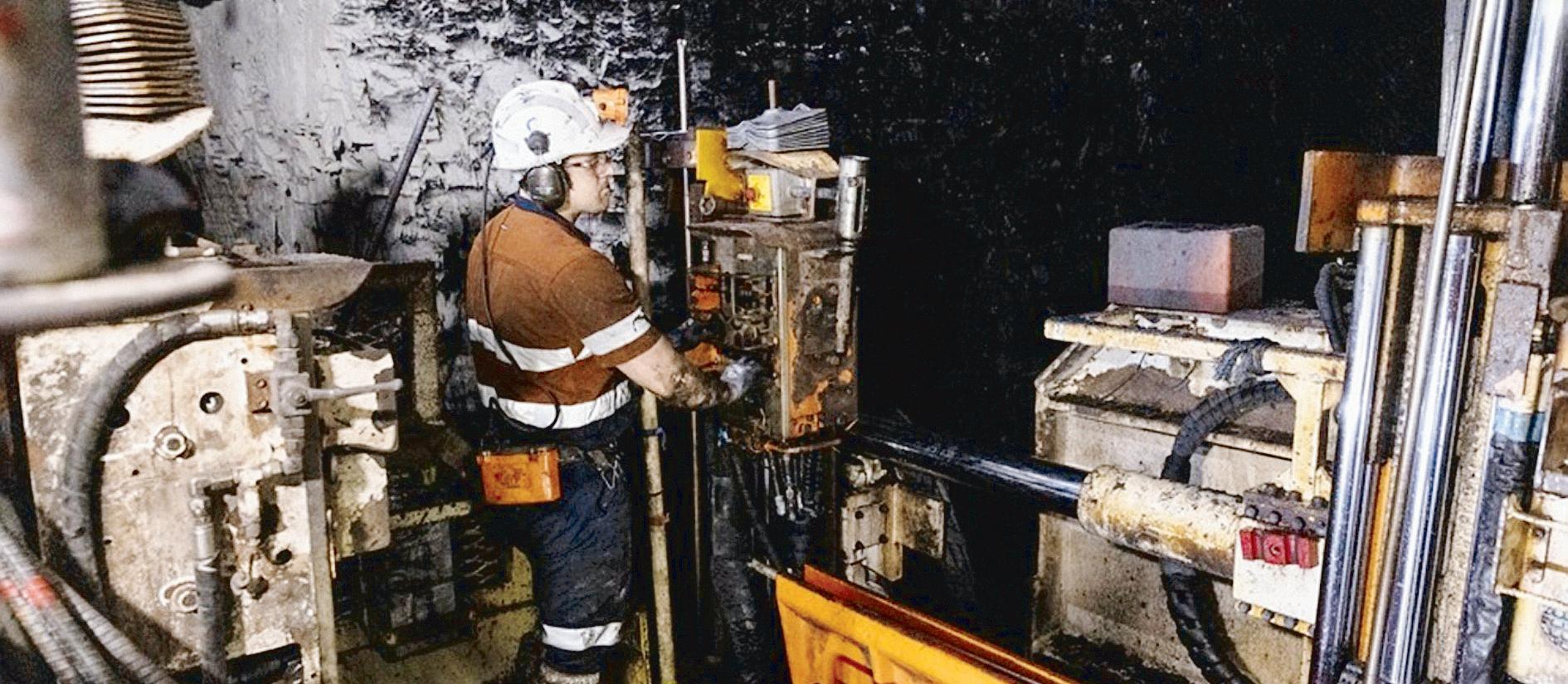
source of a high energy, low ash thermal coal with reasonable prospects of being extracted by underground mining.
“I note that the witnesses give opinions about matters that are outside their expertise and, on occasion, swear to the issue,” she said in her judgement.
In part of her affidavit, Ms Carins said a coal mine resource report dated 31 December 2023 showed the total estimated coal resource in the MLA was 85 million tonnes, comprised of 21Mt of measured resource and 64Mt indicated re-
President Stilgoe said three affidavits presented to the court from experts nominated by Sungela and Bowen Investment, including the Ensham site senior executive and general manager Matthew Lumb and the mine’s environmental superintendent Tayla Carins, came with the risk they lacked the necessary objectivity and independence.
President Stilgoe said she was satisfied the proposed MLA would be an acceptable level of development and that the owners had the necessary financial capacity and technical expertise.
“An additional 20 years of mining operations is significant – for the environment, for the community of Emerald and for the applicants,” she said.
“However, considering the time the applicants have estimated for mining operations and rehabilitation and closure of the MLA, I am
satisfied that a term of 25 years is appropriate.”
The Ensham operation is covered by seven mining leases and two mineral development leases.
Lock the Gate Alliance head of research and investigations Georgina Woods said the Land Court outcome was “entirely reasonable and necessary to protect Queensland’s interests”
“We urge Resources Minister Dale Last to accept the Land Court’s recommendation,” she said.
“Coal mines must not be allowed to continue polluting dangerous greenhouse gases while Queenslanders suffer the consequences of fossil fuel-driven climate change.”
Whitehaven Coal has completed its sell down of 30 per cent of its Blackwater mine to form a joint venture with Nippon Steel and JFE Steel.
On Monday 31 March, Whitehaven confirmed the transactions to sell 20 per cent of the Blackwater mine to Nippon Steel Corporation and 10 per cent to JFE Steel Corporation have now completed.
Whitehaven received an aggregate cash consideration of US$1.718 billion from the transactions.
The effective economic ownership of the joint venture commenced on 1 April 2025.
“I congratulate everyone involved in the formation of our new joint venture at Blackwater,” Whitehaven’s chief executive officer and managing director Paul Flynn said.
“We’re excited to be partnering with Nip-
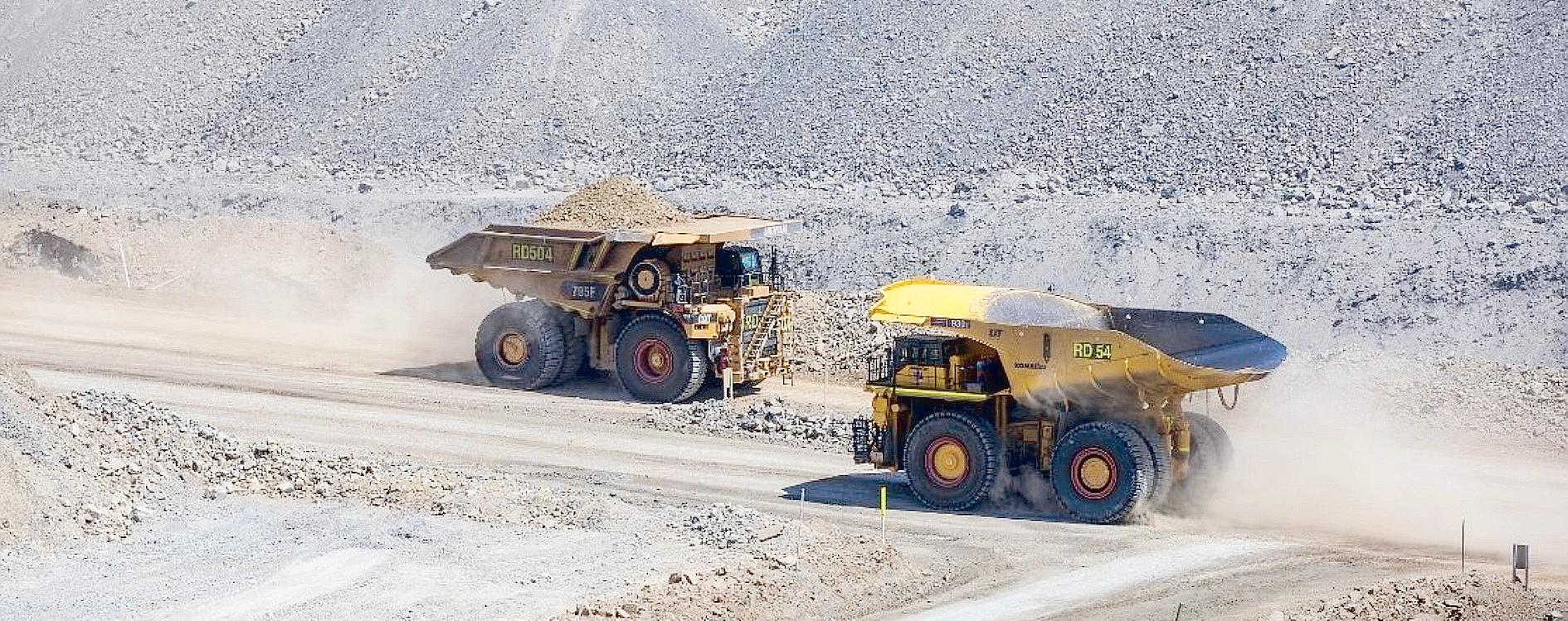
pon Steel and JFE Steel, two longstanding customers that recognise the value and longterm importance of the metallurgical coal
A passion for rocks and the Earth’s processes has earned James Cook University student Lucy Bye the 2025 Christopher Wallin Prize for Excellence in Geology.
The prize, awarded by the QCoal Foundation, is given to the second-year Bachelor of Geology student at JCU with the highest GPA – and Ms Bye’s stellar academic performance made her a standout recipient.
QCoal Foundation chief executive officer Sylvia Bhatia said the organisation was proud to support the prize for a second consecutive year.
“Our Founding Donor, QCoal Group, is committed to encouraging the next generation of geologists, and we collectively congratulate Lucy on her achievement,” Ms Bhatia said.
“Lucy’s dedication and enthusiasm for her field are inspiring.”
Ms Bye said the recognition came as a surprise, but one she is incredibly grateful for.
“Studying geology at JCU has been a wonderful experience,” she said.
“I love the balance between theory and practical learning – being out in the field, applying what we learn in class, and working alongside people who share the same passion.
“I’ve never second-guessed my choice to study geology. I’m excited to start a career that combines lab and fieldwork and allows me to keep learning about the Earth and how it works.
“Being recognised for something I genuinely love doing is a real bonus.”
The Christopher Wallin Prize is named in honour of the late geologist and recognises academic excellence and commitment to the field.
produced at Blackwater.”
Whitehaven assumed complete ownership of Blackwater and Daunia mine from
BHP in April 2024.
The company acquired both mines for $US4.1 billion, paying BMA $US2 billion plus a preliminary completion adjustment of $US44.1 million.
With a strike length of 80km, the Blackwater mine is a significant asset in Whitehaven’s portfolio and a cornerstone of the company’s operations with around 2000 workforce personnel.
The Blackwater mine produces predominantly low-ash, low-sulphur metallurgical coal products, as well as high energy thermal coal and its coal products are exported across Asia.
The mine reports output of 14 million tonnes of coal annually.

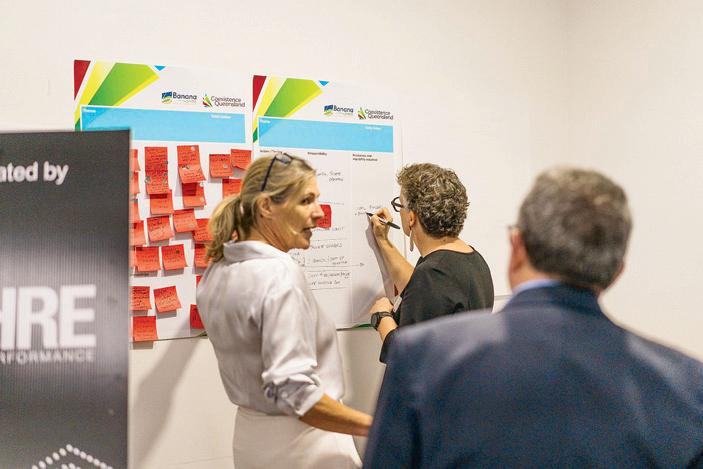

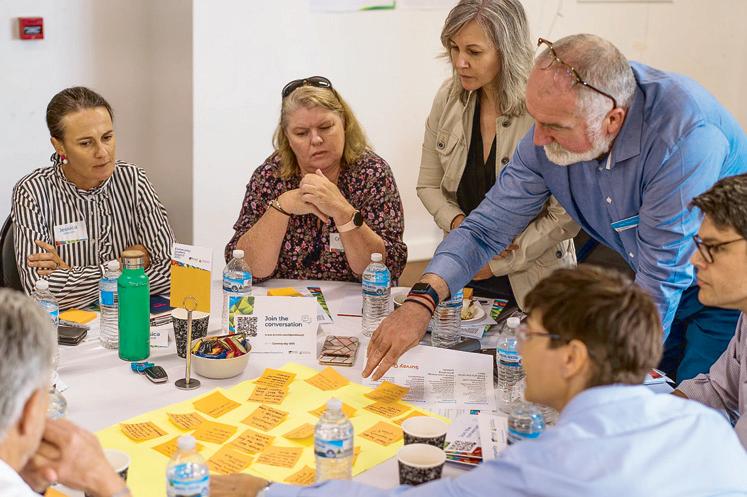

Banana Shire Council and Coexistence Queensland partnered to gather more than 100 regional leaders in Biloela last month, to discuss how traditional and emerging industries can sustainably coexist with communities and landholders.
The Community Leaders Council event brought together landholders and leaders from agriculture, business, community, Traditional Owner groups, mining, resources, renewable energy, the environment, and government.
The event’s theme, Shared Landscapes –Coexistence Challenges and Opportunities in the Energy Transition, encouraged attendees to collectively identify and harness benefits while also addressing emerging issues.
Banana Shire Mayor Nev Ferrier said the meeting was a valuable step forward for regional collaboration.
“This meeting shows what can happen when we all come together—industry, government, and community — to have real conversations,” he said.
“It’s about finding opportunities, working together to find solutions, and building a stronger, more diverse economy for the future of our region.”
Coexistence Queensland, which co-hosted the event, is an independent statutory body established to facilitate and address how landholders, communities, and the resources and energy industries can sustainably work and thrive together.
It provides educational tools to landholders and acts as an ‘ear to the ground’ to guide government and industry on what communities need.
Coexistence Queensland chief executive officer Warwick Squire said it was fantastic to see such a diverse group of stakeholders working together, demonstrating how incredibly important and powerful it can be to bring everyone into the same room.
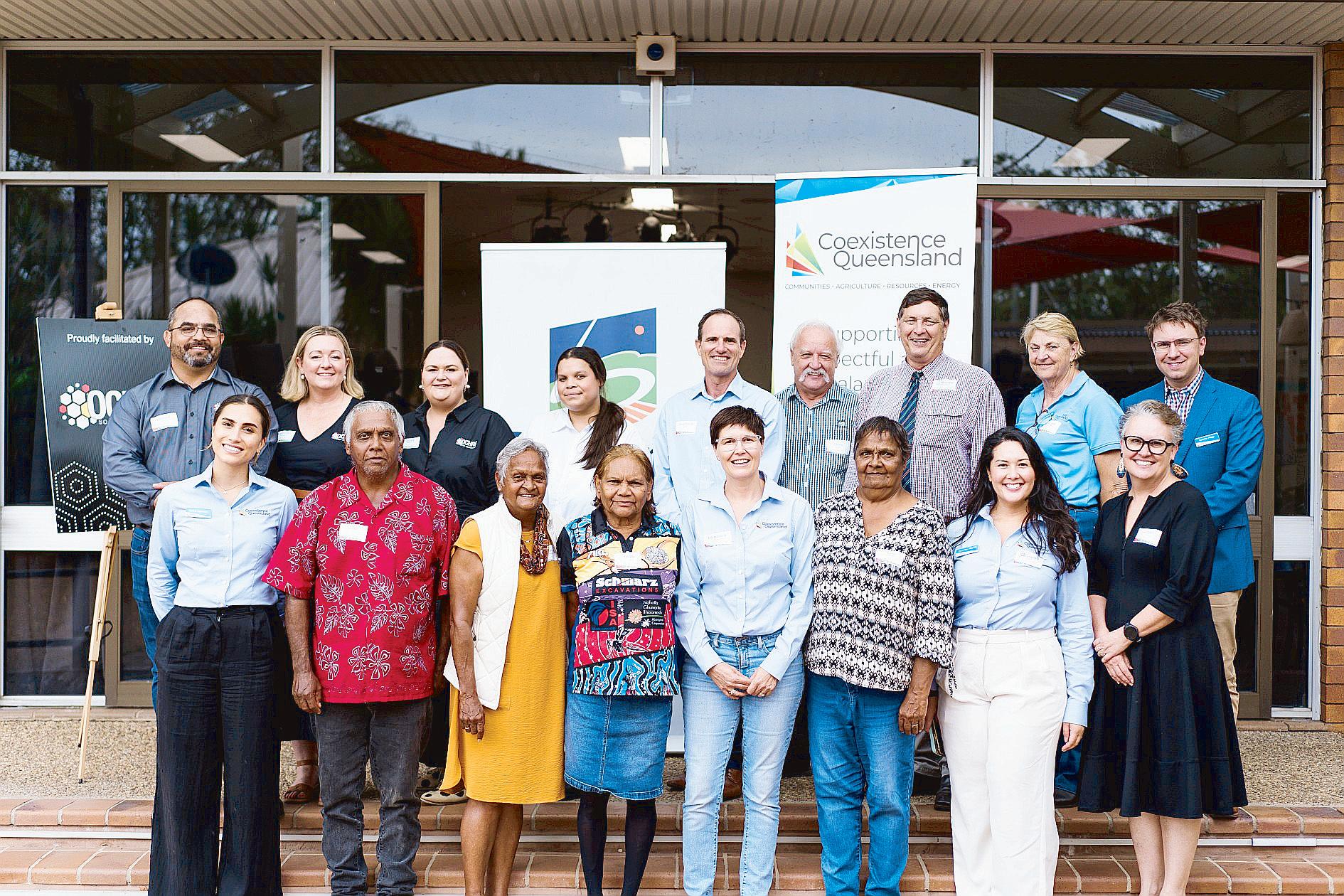
“Queensland’s energy transition presents coexistence opportunities and challenges for rural landholders, regional communities, and the renewable energy and resources sectors,” he said.
“The event provides a unique and valuable opportunity to collectively develop solutions and identify actions to influence outcomes for the community.”
Callide MP Bryson Head said the region has a legacy of shared landscapes.
“Our region is home to significant agricultural investments that operate side by side with our world-class resource and energy industries,” he said.
“Queensland has a proud track record of developing our coal and gas fields while pro-
tecting farming land and the environment, and there is no reason this can’t be applied more broadly.
“And that’s why today’s conversations are so important, because investment in this region, no matter the industry, must occur with the community in mind.
“The Crisafulli Government will always give a voice to local communities. One of our first acts in government was to make local commu-
nity consultation rights permanent for wind farm developments, as part of our commitment to openness and transparency.”
The Community Leaders Council is a key initiative designed to promote open communication and respectful collaboration to achieve balanced coexistence outcomes.
The discussions and findings from the event will be captured in an Outcomes Report to be released later in the year.




The 2025 Gladstone Engineering Alliance (GEA) Supply Chain Expo will be held on Wednesday, 30 April.
An annual fixture in the Harbour City, the expo at the Gladstone Entertainment and Convention Centre is a golden opportunity for businesses to connect, collaborate and learn from like-minded professionals.
The event aims to attract procurement and industry leaders, fostering opportunities to build valuable relationships, showcase capabilities and expand networks.
Featuring expert panels, the expo provides a platform for businesses to showcase their strengths and position themselves as key players within the supply chain.
The latest advancements in supply chain management will also feature prominently in discussions during this year’s event, highlighting why Central Queensland has long been recognised as an industrial powerhouse of the Sunshine State.
GEA general manager Alison Murdoch said the expo had grown into a juggernaut throughout its long and proud history.
“It is the premier event for businesses to network, collaborate and grow their business,” she said.
“This popular event provides a platform for businesses who work in the Central Queensland Industry Supply Chain to showcase their expertise, services and innovations.
“We would also like to extend our thanks to Australia Pacific LNG, operated by ConocoPhillips, for returning as our principal partner in 2025, helping make this valuable opportunity possible in Gladstone.”


Australia Pacific LNG is a joint venture be-
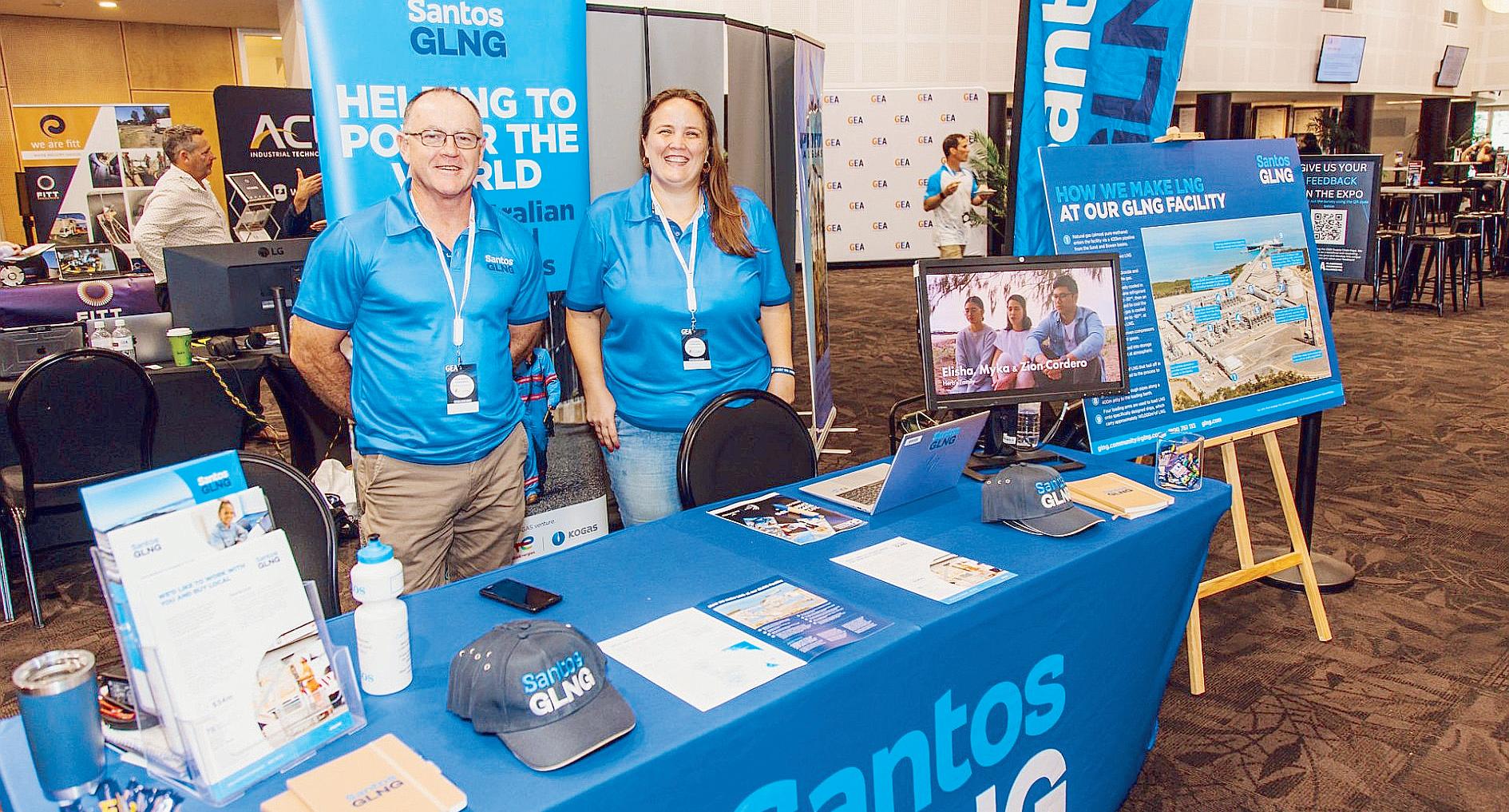
tween ConocoPhillips (47.5 per cent), Origin Energy (27.5 per cent), and Sinopec (25 per cent). ConocoPhillips Australia operates the downstream LNG facility on Curtis Island, near Gladstone, and the LNG export sales business.
Australia Pacific LNG is the largest producer of natural gas in eastern Australia, supplying Australian customers with natural gas and international customers with liquefied natural gas (LNG). Each year, APLNG supplies approximately 30 per cent of the Australian east coast domestic gas market.
Ms Murdoch said with more than 300 attendees, the expo provides a prime opportunity for companies of all sizes to generate leads, conduct market research and stay ahead of industry trends.


“It’s an opportunity to engage in meaningful conversations, strengthen brand recognition,
and explore new business opportunities in a dynamic and highly interactive environment,” she said.
“Whether you are looking to launch a new product, demonstrate your capabilities or gain insights into the latest supply chain management advancements, the 2025 GEA Supply Chain Expo provides the ideal setting to drive business growth and establish long-lasting connections.”
The expo environment facilitates networking with other exhibitors and industry influencers to build mutually beneficial partnerships. It allows businesses to:
• Conduct market research and receive feedback from industry and the public about their offerings.

industry-specific clients.
• Maximise return on investment by building a database of new and potential clients.
Sponsorship and stallholder opportunities are available for businesses looking to showcase their offerings and connect with industry leaders.
Interested parties are encouraged to express their interest by contacting GEA at membership@gea.asn.au or calling 07 4972 9060.
The upcoming GEA Supply Chain Expo will run from 8am to 3pm on Wednesday, 30 April at the Gladstone Entertainment and Convention Centre.




• Showcase current or emerging products to
The event is free to attend, offering unmatched access to industry insights, networking opportunities and potential business growth.


Our team of integrators, engineers and project managers harness decades of experience to deliver
From equipment rental, service and maintenance to turnkey system design –CSE Crosscom goes beyond traditional capabilities to keep teams
improve performance and maintain critical operations.
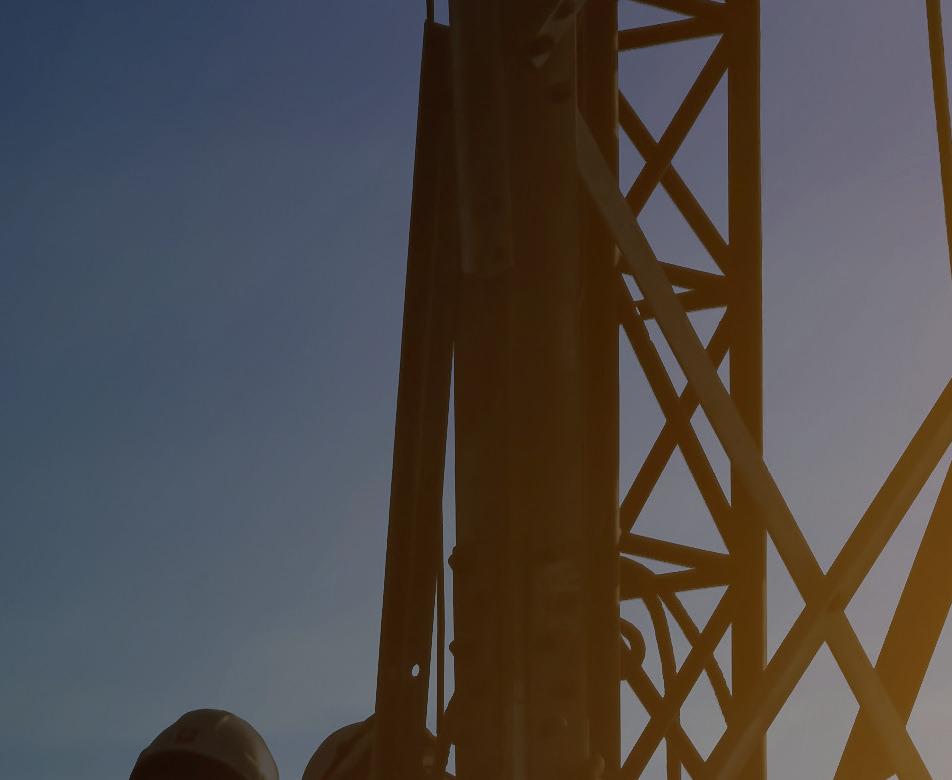













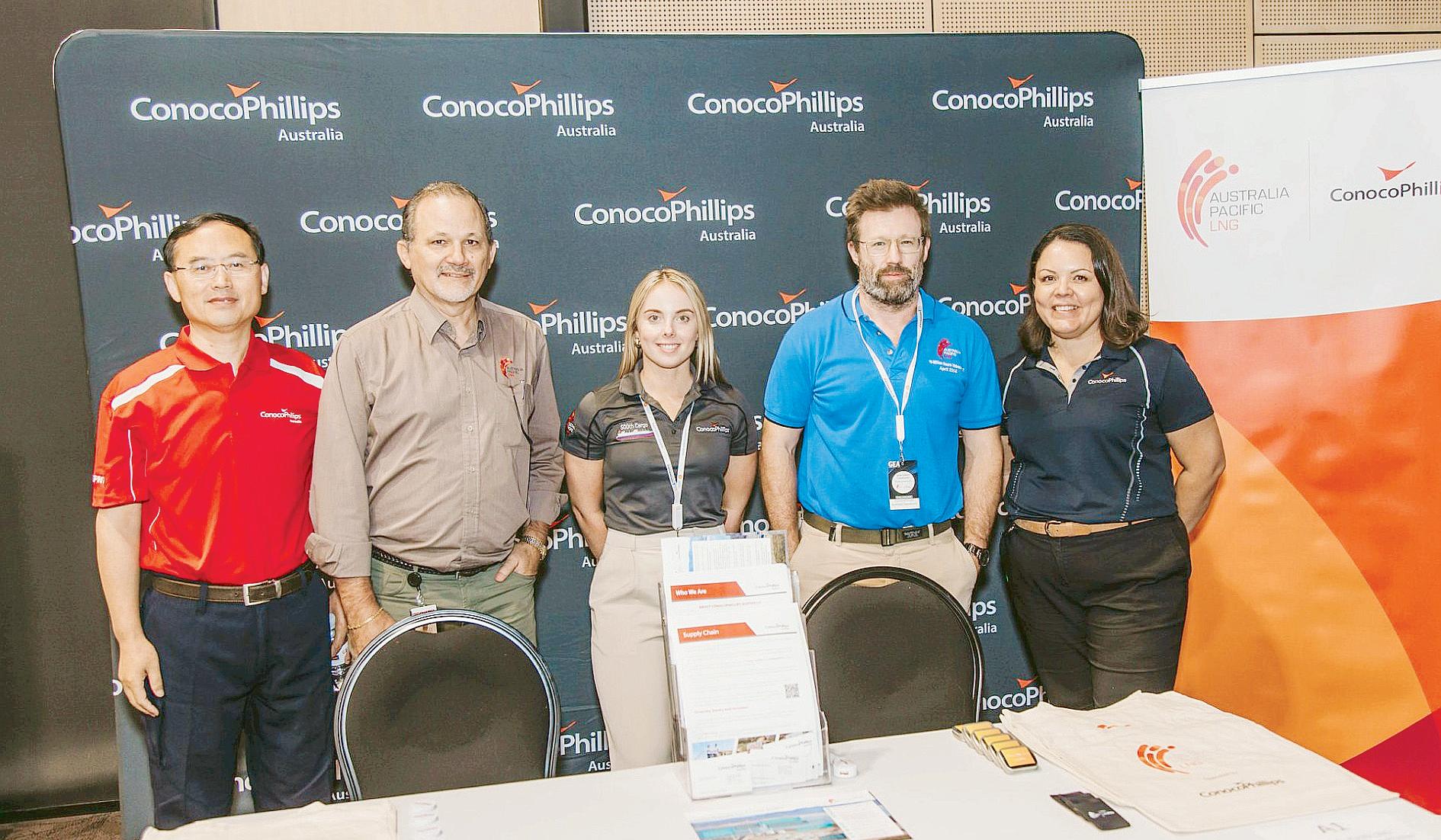






Winnellie Hydraulics has been supporting the oil and gas and mining sector since 1983 and Winnellie Valve & Process was launched as a separate division in January 2020 to highlight our dedication to providing high end technical valve solutions for our customers in the mineral processing, energy, power generation, chemical processing and pulp and paper industries. In September 2023 we became part of Questas group who are the largest integrated Hydraulics and Flow Control business in Australia.







Gladstone Regional Council is reinforcing its election priorities now that the 2025 Australian Federal Election has been called for Saturday, 3 May.
Housing solutions, a strategic naval presence, regional water supply and wastewater, and a modern events and sporting precinct have all been identified as critical priorities for the Gladstone Region.
The council is calling on Federal Government support for:
• Housing – Provide immediate solutions to the housing crisis.
• Royal Australian Navy Fleet Base – Establish a permanent Royal Australian Navy (RAN) base in Gladstone (Fleet Base North) as the primary home of the RAN’s east-coast fleet.
• Regional Water Supply and Wastewater –$170 million over the next three years to fund and meet current and future regional water supply and wastewater infrastructure needs.
• Harvey Road Sports and Events Precinct –$3.4 million to secure approvals and complete detailed designs for the project to be construction-investment ready.
Gladstone Region Mayor Matt Burnett said that with the Federal Election campaign un-
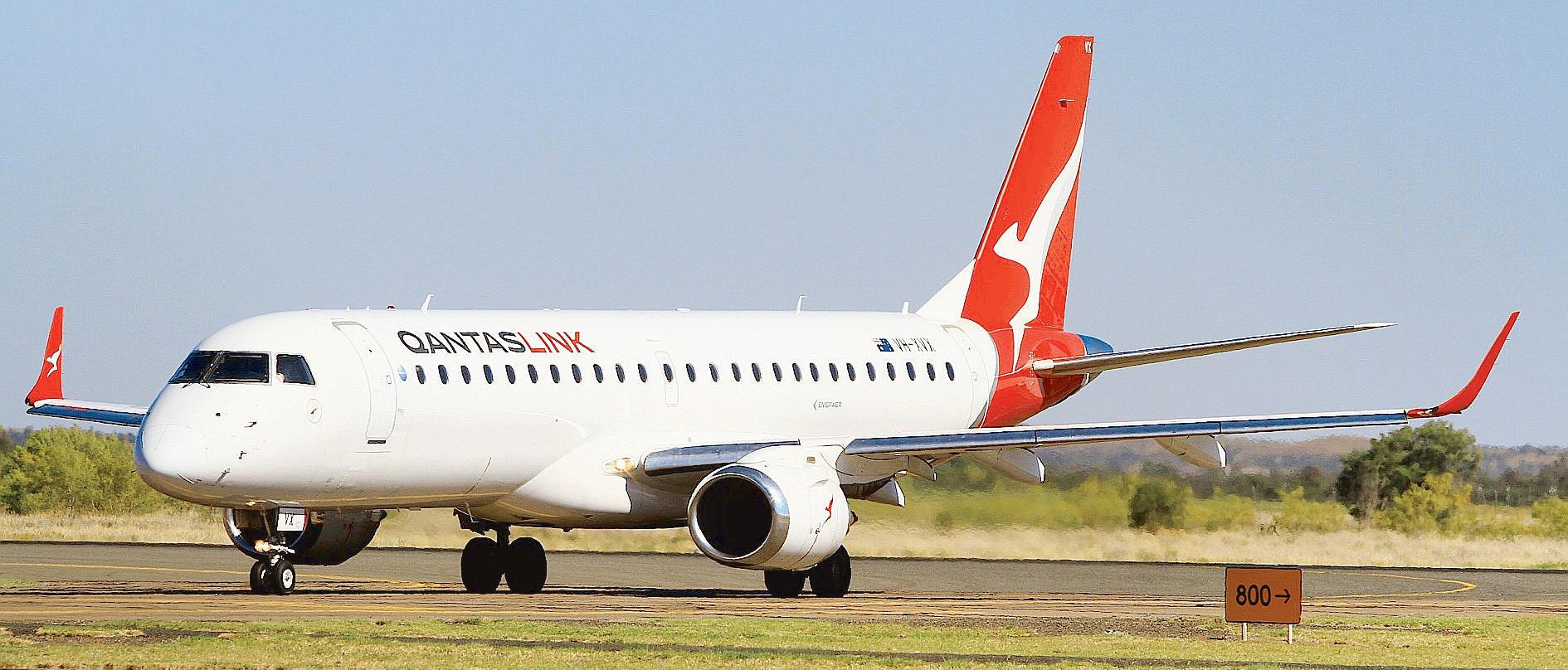
has announced an upgrade of a number of regional lounges, which will include Rockhampton, Gladstone and Emerald airports. (File)
Three major Central Queensland airports will be the scene for Qantas regional lounge upgrades.
The lounges at Rockhampton, Gladstone and Emerald airports are set for a major boost as part of a nationwide investment.
Modern furnishings, improved seating, and enhanced technology to elevate the passenger experience.
The news comes as Qantas officially unveiled its brand-new Broome Regional Lounge, which now boasts double the capacity of its predecessor and a striking design inspired by the vibrant hues of the Dampier Peninsula.
Travellers can expect a more contemporary and comfortable space when work gets underway in the coming months.
Sustainable features will also be introduced, including a push to reduce singleuse plastics, while carefully selected artwork will showcase the talent of Australian artists.
QantasLink chief executive officer Rachel Yangoyan said the airline remained committed to strengthening its ties with regional communities.
“We’ve been part of regional Australia for more than 100 years, and we want to make sure we continue investing in and deepening our connection with these communities for decades to come,” Ms Yangoyan said.
“Delivering a great experience across the whole travel journey is important, which is why we’re upgrading and refreshing seven of our regional lounges over the next 12 months with a multimillion-dollar investment.”
Rockhampton, Gladstone and Emerald’s lounge upgrade will be part of a broader refresh program that also includes Mackay, Karratha, Coffs Harbour and Tamworth.
Ms Yangoyan also highlighted the airline’s commitment to regional flying, with more than 40 newer aircraft set to join the QantasLink fleet over the next few years.
“These new aircraft offer a better customer experience and allow us to maximise regional connectivity while improving inflight service,” she said.
For Rockhampton’s frequent travellers, that means a more comfortable lounge experience on the ground and a smoother ride in the air — a welcome change for those who regularly fly for business or leisure.
derway, all political parties and their leaders are being called upon to play their part in growing this region.
“The Federal Government’s continued contribution and support, whether that be engagement and/or investment in our priorities, is key in turning them into reality for our community,” Cr Burnett said.
“Our region is home to 65,000 people, supports almost 28,000 jobs, and has an annual economic output of $20.535 billion.
“So, our message is simple – support the region that supports the national economy.”
Cr Burnett said the identified priorities focus on strategic infrastructure and policy initiatives that will not only drive the region forward but are also critical to supporting the national economy.
“These priorities are not something we’ve thought about overnight – they are well planned, well detailed, and crucial to futureproofing our region,” he said.
“I welcome all enquiries as well as commitments from candidates to play their part in ensuring the Gladstone region remains a fantastic place to live, work, invest, and play.”

CQUniversity’s immersive and interactive Hydrogen Central swung open its doors to the Gladstone community for the first time last month.
Hundreds of locals, from parents and kids to business representatives, took the opportunity to experience what the new centre has to offer at the official community launch event.
The community information centre, located at CQUniversity’s Gladstone Marina campus, aims to coordinate hydrogen industry events and build awareness of the region’s growing clean energy sector.
Open to the entire community, centre project manager Dr Cal Devney said people interested in hydrogen, science, and the environment – as well as those keen to enjoy hands-on activities – attended the event.
“It was great to see community members learn, interact and explore the future of hydrogen in an engaging way,” Dr Devney said.
From electricity generation using renewable energy kits to molecule creation with sticky atoms, there was plenty to see, do and learn at the centre, which is now officially open and operational.
“The centre will generate research projects designed to support a broader community understanding of the opportunities within the hydrogen industry in Queensland. It will also enhance community awareness of the emerging hydrogen sector, boosting confidence in hydrogen as a clean, reliable and affordable energy source,” Dr Devney said.
Rio Tinto’s refinery decarbonisation general manager Tim McDougall said Rio Tinto was proud to support CQUniversity and Hydrogen Central.
“It’s great to see so many locals have come to have a look,” Mr McDougall said.
“At Rio Tinto, we know how important it is to get behind local research and education.








“Right here in Gladstone, we’re securing more renewable energy and storage projects to keep our operations cost-competitive and ensure the long-term viability of the Boyne Smelter, Yarwun Refinery, and Queensland Alumina Limited (QAL) Refinery.”
Mr McDougall said many of the technologies Rio Tinto would need in the future do not yet exist.


“Which is why it’s important for students –including our potential employees of the future – to get involved in science,” he said.
Gladstone Region Mayor Matt Burnett said the opening of Hydrogen Central was a “fantastic milestone” that would educate, inspire, and provide valuable information not only to the community but also to visitors.
“The emerging hydrogen industry is one
that Gladstone is proud to be at the forefront of as we transition towards becoming a green energy powerhouse,” he said.
“It is also a key component highlighted within the 10-year Gladstone Region Economic Transition Roadmap.
“I’m looking forward to seeing Hydrogen Central put to good use and congratulate CQUniversity on this achievement.”




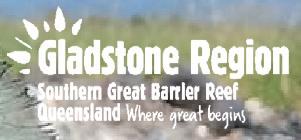













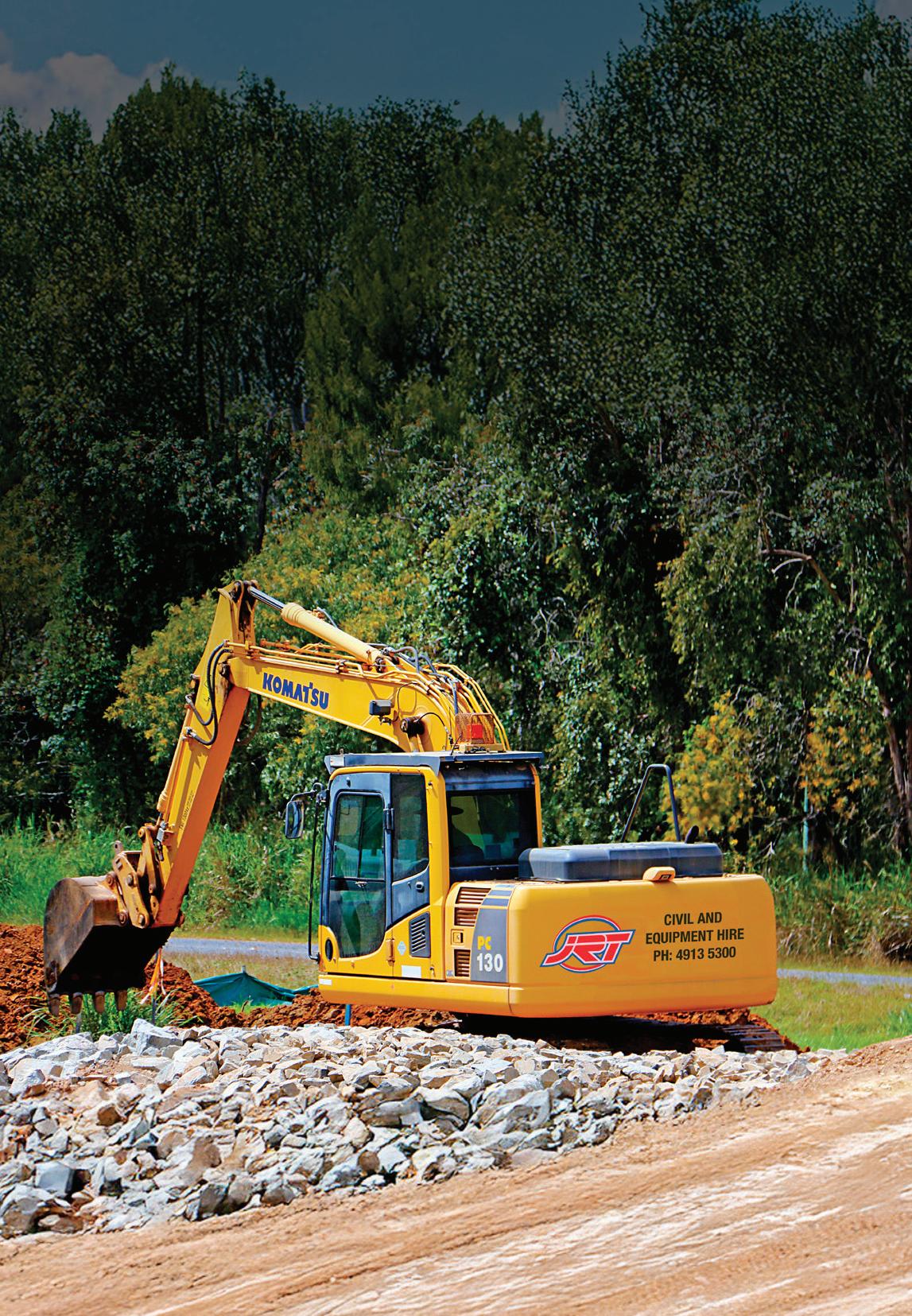

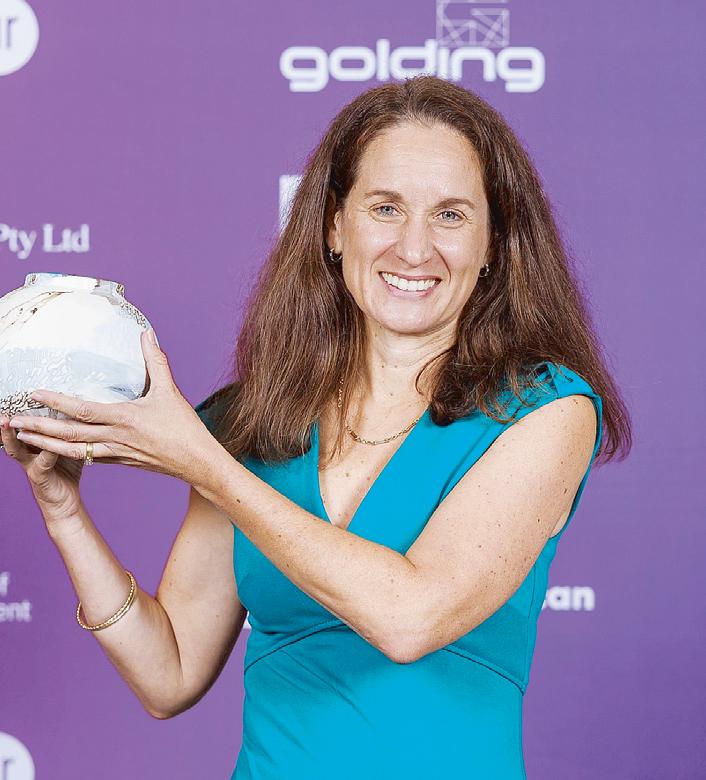

A pioneering dust and health researcher and a breakthrough childcare initiative were among the standout winners at the 2025 Resources Awards for Women, held in Brisbane today, as new figures revealed a record number of women are now working in Queensland’s resources sector.
Postponed from its traditional International Women’s Day timing due to ex-Tropical Cyclone Alfred, the awards — now in their 19th year — were co-hosted by the Queensland Resources Council (QRC) and Women in Mining and Resources Queensland (WIMARQ) on Wednesday, 2 April.
A crowd of 1100 gathered at the Brisbane Convention and Exhibition Centre to celebrate 18 outstanding finalists, with the announcement of the winners coinciding with the release of fresh QRC diversity data showing female participation in the sector has climbed to new heights.
The proportion of women in Queensland’s resources workforce rose to 23 per cent in 202324, up from 22.1 per cent the previous year — setting a new benchmark. That equates to 8681 women employed in the industry, with more than 90 per cent working in non-administrative roles.
QRC chief executive officer Janette Hewson said the data reflects significant progress and paints a promising future for women in mining and energy.
“This year’s record results are outstanding, and I hope they inspire any woman considering a job in the mining and energy sector to dive right in,” she said.
“It’s incredible to see the 610 per cent increase in the number of women in trade roles over the past decade — a clear sign our industry is more diverse and inclusive in its attraction, recruitment and retention programs.
“But we cannot stop here. More diverse workplaces are safer, more productive and more positive working environments for everyone. This frequently leads to stronger overall performance and increased staff retention, which is significant for a sector like ours that is still struggling with skilled worker shortages.”
The data also showed gains across senior ranks.
The proportion of women in executive management roles rose to 28.1 per cent (up from 26.1 per cent), while senior management rose to 27.4 per cent, superintendent roles to 20 per cent, and operator and production roles to 17.1 per cent.
WIMARQ co-chair Sally Rayner noted Queensland was outpacing the national average for female participation, while also building a younger and more dynamic workforce.
“In 2023-24, 8681 women benefitted from well-paying jobs and career development in our state’s mining and energy companies, and we hope that number continues to grow,” Ms Rayner said.
“More than 40 per cent of those women were aged 34 or younger, well above the 32 per cent national average in the mining workforce. At the same time, only 20 per cent were aged 50 or over — compared to 26 per cent nationally — showing Queensland is attracting the next generation.”
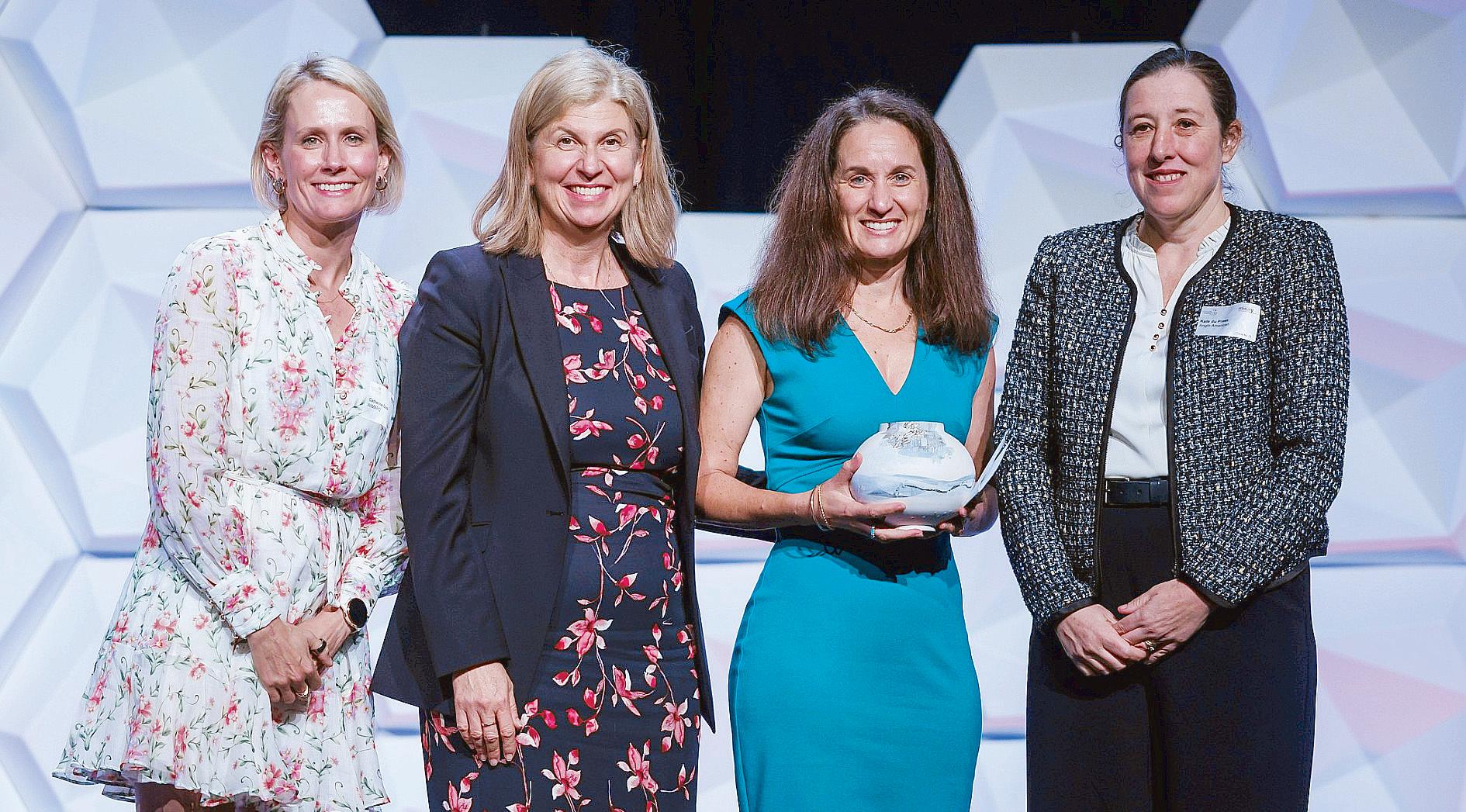
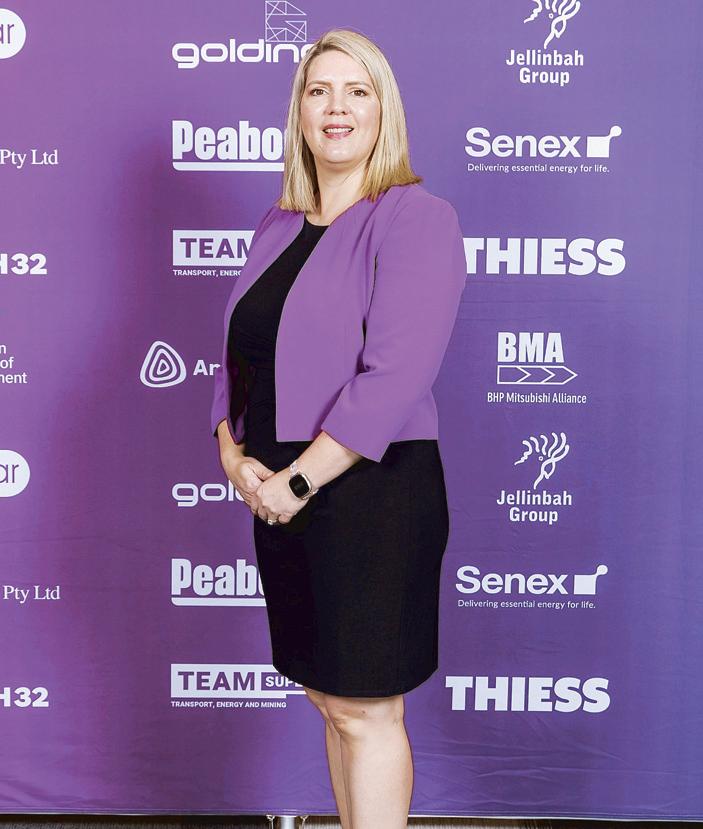


The awards recognised excellence in technical, trades, technology, innovation, diversity advocacy and leadership roles, with QRC’s Janette Hewson praising the calibre of nominees.
“This year’s winners are trailblazers, changemakers and exceptional leaders,” she said.
“Getting to know the outstanding field of finalists was humbling and rewarding. They are excellent role models for the diverse and rewarding careers available in our sector, and we hope they inspire a new wave of diversity, equity and inclusion champions and allies.”
The 2025 QRC/WIMARQ Resources Awards
for Women were proudly supported by BMA, Australia’s largest producer and supplier of metallurgical coal, operating five Bowen Basin mines and the Hay Point Coal Terminal near Mackay.
WINNERS
• EXCEPTIONAL WOMAN IN QUEENSLAND RESOURCES: Jackie Rose-Meyer (Glencore)
• EXCEPTIONAL YOUNG WOMAN IN QUEENSLAND RESOURCES: Ashlee McCarthy-Griffiths (Stanmore)
• EXCEPTIONAL TRADESWOMAN/TECHNICIAN/OPERATOR IN QUEENSLAND RE-
SOURCES: Kylee Frankee (South32)
• INCLUSION AND DIVERSITY CHAMPION IN QUEENSLAND RESOURCES: Chika Onyeogaziri (BHP)
• EXCEPTIONAL WOMAN IN TECHNOLOGICAL INNOVATION IN QUEENSLAND RESOURCS: Dr Nikky LeBranche (The University of Queensland)
• EXCEPTIONAL FEMALE QMEA STUDENT: Jixie Navarro (Moranbah State High
• EXCELLENCE IN DIVERSITY PROGRAMS AND PERFORMANCE IN QUEENSLAND RESOURCES: BMA Childcare

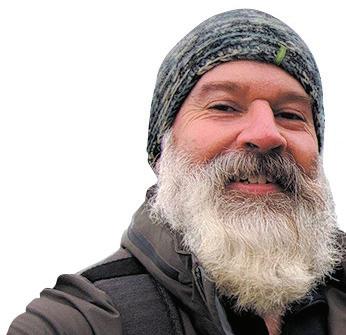

As we step into April, it’s hard to believe how quickly the year is moving!
There’s plenty happening at the Capricornia Chamber of Commerce, so here’s a quick update on what’s been going on and what’s coming up. FEDERAL BUDGET
The federal budget has certainly sparked some discussion.
While it includes a $150 energy rebate for small businesses, there are a few changes that may have mixed impacts on our community.
One of the most debated items is the abolition of non-compete clauses for workers earning less than $170,000.
While this could boost flexibility and productivity, it’s a concern for industries like hairdressing, where non-compete clauses play an important role in protecting small business owners.
There’s also a national licensing scheme for electrical trades and a welcome incentive for apprentices working in construction-related fields, offering $10,000 to help complete their training.
Another positive for the hospitality sector is the two-year pause on the indexation of draft beer excise.
However, small businesses will miss out on an extension of the $20,000 instant asset writeoff, which many of us have found valuable.
Although it seems both major parties may have promised to keep that, so watch this space.
Overall, the lack of significant structural reforms in the budget is disappointing, particu-

larly in terms of long-needed taxation changes.
In more positive news, our March coffee catchup at the Tanby Garden Centre was a success.
We got so tied up in conversations that we completely forgot to take any photos!
We’re also excited about the upcoming “Skill to Trade Connections” event on 14 May at Yeppoon State High School, organised by the CQ Regional Organisation of Councils Regional Jobs Committee.
This event, hosted by Construction Schools
Queensland and the Regional Jobs Committee, aims to encourage students to consider careers in the construction industry.
It’s a great opportunity for businesses to connect with potential apprentices.
Our chamber is focused on strengthening business connections across the Capricorn Coast. We’re working on setting up a subcommittee to give local businesses more of a voice and support for their own initiatives, much like the subcommittees we have in the Rockhampton CBD and Gracemere.
We’re also looking ahead to the federal election and working on arranging interviews with local candidates to discuss business and infrastructure issues.
Our next Chamber coffee catch-up will be on the last Wednesday of April, likely in Rockhampton.
Make sure to stay tuned to our newsletter for more details.
We’re looking forward to seeing you there and continuing to work together to support our local business community.
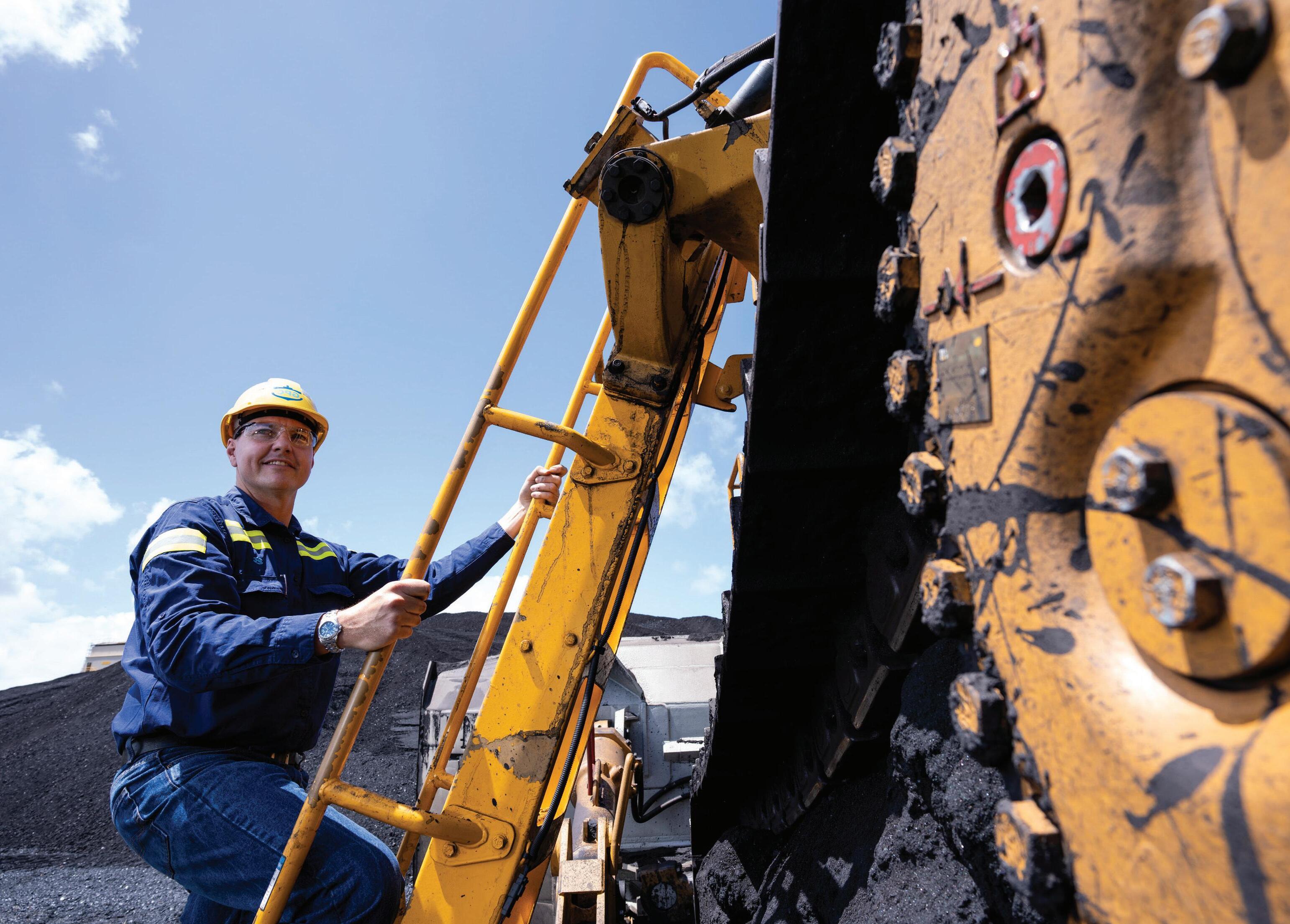



One of the best opportunities to expand your portfolio of relationships is attending industry conferences and events.
However, what needs to be remembered is the content and the community motivate most attendees to show up.
It’s an environment rich in relationship development opportunities.
Likewise, it’s a fertile ground for expanding the diversity and quality of your business relationships.
You can explore the latest market trends and competitive landscape at any industry event and hear directly from thought leaders.
But even at events with great opportunities, some attendees may not be relevant to your current role, responsibilities, or aspirations.
The number one mistake people make is spending excessive time and effort talking to someone who, while pleasant and interesting, isn’t relevant to what they’re working on, which sidetracks their relationship development playbook.
When I refer to the wrong people, I don’t mean that some are less valuable than others.
I’m referring to relevancy.
It’s like if you’re in need of a laundry, the best coffee shop in the world is irrelevant.
The question is: how relevant is this person to the goals and objectives you’re seeking to achieve?
This isn’t about being manipulative.
It’s not an elegant way of using people.
It’s about being intelligent in how you invest your valuable time, energy, and resources.
You simply can’t afford to invest in every relationship equally.
I saw this clearly at a past Connecting Industry event, where I had a chance conversation with a senior project engineer from one of

the major contractors delivering a large-scale solar and battery project.
We didn’t talk business cards or pitches; we talked about the challenges in sourcing local suppliers and how hard it was to find businesses with the right accreditations.
That five-minute conversation turned into a longer coffee meeting a week later, which led to my business being invited to support stakeholder engagement on a different regional project.
The key? I didn’t waste time chasing executives who weren’t relevant to what I do, I focused on listening, understanding the engineer’s pain points, and offering value where it was needed.
A best practice here is to identify influential hubs, subject matter experts, or those who are well-connected and can consistently engage and influence others.
Think of the classic bike wheel - they are the hub in the middle, with the many spokes fanning out from that position.
Certain roles naturally lend themselves well to this concept.
The best managing directors I know are deeply embedded in their communities and have access to many potential clients and referral sources.
The best BDMs, recruiters, and industry consultants are often excellent hubs because of the diversity of relationships they’ve built over time.
You’ve probably heard the saying, “It’s not what you know, but who you know.”
But as a mining CEO once told me, “By the time you’ve got a project or site manager, it doesn’t matter who you know, it’s about who they know.”
That comment stuck with me.
It’s critical to your relationship-building approach to identify these hubs and find ways to become valuable to them.
And remember, one of the fastest ways to burn a relationship with a hub is to walk up and say, “What can you do for me?”
Although many hubs are genuine and generous with their time, you’ll quickly be branded a Taker if your approach is self-serving.
What’s critical in any relationship-building effort is your willingness to genuinely invest time, effort, and resources into helping others succeed.
While industry events provide a rich environment for building and diversifying business relationships, the real value lies in the intentionality of your approach.
Prioritising relevance over randomness and focusing on adding value to others, especially influential hubs, will yield far greater returns than simply collecting contacts.
Relationship development isn’t about taking. It’s about contributing meaningfully, aligning your efforts with your goals, and connecting with those who can amplify your impact through their networks.
When you become a consistent asset to the right people, you not only build stronger relationships, but you also position yourself at the centre of opportunity.
By Jon Davies, Australian Constructors Association chief executive officer
With the starting gun fired in the race to The Lodge, it is clear that, with an electorate struggling to make ends meet, both main political parties will seek to portray themselves as the party best able to reduce the cost of living.
Recently announced initiatives like rebates on electricity bills and increased bulk billing of GP visits are obvious ways to do this but what about improving the productivity of the construction industry?
While this is unlikely to appear in any election manifesto, it should be a focus of whoever is elected if they are serious about improving living standards.
Living standards depend on two key factors: wages and the cost of goods and services. Employers can only increase wages without raising prices if workers become more productive. In construction — one of Australia’s largest industries — productivity has stagnated for decades.
The construction industry is the nation’s fourth largest employer, with 17 per cent of all Australian businesses employing over 1.3 million people and generating almost 8 per cent of GDP. But according to the Australian Bureau of Statistics, construction is now less productive than it was 30 years ago.
Compared to other major industries, its productivity growth in that time lags by more than 30 per cent. That lost efficiency costs the economy over $60 billion a year.
Closing this productivity gap would wipe

industrial relations stability based on achieving common interests. As an example, a modern version of the Hawke-Keating Prices and Incomes Accord – uniting government, industry and unions – could drive a shared commitment to improving productivity.
In terms of bringing people together, the Commonwealth could also work with the states to harmonise the recognition of construction skills and qualifications allowing the free movement of labour across country to areas of high demand.
out current labour shortages impacting the building of new houses and substantially reduce the cost of the new office buildings, warehouses, transport and power infrastructure that all contribute to the cost of goods and services. It would also help the government to pay for the power rebates and increased bulk billing!
So, what role can the federal government play in making the industry more productive?
While, with a few exceptions, it doesn’t directly procure construction services, it is uniquely placed to improve the efficiency of how this is done.
The following are just a few suggestions.
The appointment of an administrator to manage the affairs of the industry’s largest construction union should see an end to the coercive control of construction activities for personal rather than project gain.
But to prevent history from repeating, any new government must prioritise long-term
As far as possible, designs for key pieces of infrastructure such as schools, hospitals, prisons and electricity pylons could be standardised across the country and investment in offsite manufacturing facilities underwritten through stable pipelines of work.
The construction industry could be incentivised and supported to use the vast amounts of data it produces to improve the accuracy of project budgets, reduce re-work and identify opportunities for improvement rather than just being used to substantiate claims for additional time and cost.
Procurement rules focused on achieving true value for the taxpayer rather than the illusory value of a cheap tender price would create a race to improve project outcomes rather than a race to the bottom to undercut each other and take on unpriceable risk.
These are just a few suggestions because the construction productivity tree is groaning with low hanging fruit.
All that is missing is a committed farmer willing to start picking.
That farmer has to be the federal government as history has shown that there are too many barriers and too few incentives for anyone else to be successful at scale.
There are encouraging signs of this starting to happen.
The Department of Infrastructure is leading an initiative to develop a national construction strategy designed to improve productivity in the construction of transport infrastructure projects and the Department of Workplace Relations, through the National Construction Industry Forum, is developing a blueprint for a more sustainable and productive industry, but this is just a start and there is a risk that any new government might not continue this work.
Given the size of the prize, whoever forms government must make construction productivity a priority. Maybe it’s a Department for Construction Efficiency or maybe it is just a coordinated, strategic focus across government. Without it, the cost of homes, infrastructure and essential services will continue to rise and Australians will keep paying the price through declining living standards.
The Australian Constructors Association is the only representative body for contractors delivering vertical and horizontal construction projects, as well as undertaking infrastructure asset management.
Our members construct and service the majority of major infrastructure projects built in Australia every year.
Our goal is to create a more sustainable construction industry.


By Shelby Gurney
Chanel College Year 8 Art students have used the abstract art skills they learned during Term 1 to create an array of amazing artworks for submission in the 2025 Paint the Port Art Competition.
The budding young artists have drawn on their personal experiences with the Gladstone Port, Marina Parklands, and East Shores areas to create artworks inspired by these stunning locations.
Paint the Port is an annual art competition and exhibition organised by the Gladstone Ports Corporation. The competition provides artists with an opportunity to present their unique portrayal of port activities or infrastructure.
Chanel students have submitted works in the competition as part of their unit studies for the past few years.
Artworks will be exhibited at the ARTmatters Gallery in Gladstone from 3 April to 1 May 2025.
Gladstone Ports Corporation’s acting chief executive officer Jenelle Druce said they received more than 60 submissions from schools across Gladstone, Bundaberg, and Rockhampton, with artists capturing the essence of the port, waterways, and infrastructure through realistic and abstract pieces.
“Each year, students eagerly anticipate Paint the Port, with many entering through schools and an increasing number submitting independently,” Ms Druce said.
“It’s a great opportunity to showcase their creativity to the broader community.”
Artwork will be displayed at the Paint the Port Exhibition at Gladstone’s ARTmatters Gallery, 3 Pitt Street, from Thursday, 3 April, to Thursday, 1 May.
“So, while you’re out and about enjoying our wonderful parklands over the Easter school holidays, or heading to the Harbour Festival, be sure to check out this year’s talented submissions,” Ms Druce said.








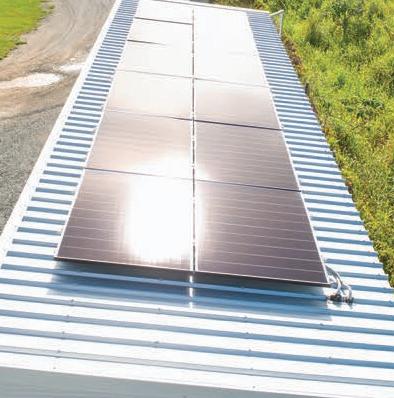

The Gladstone Area Water Board (GAWB) is fostering new talent, welcoming Toby Simmons as its newest Electrical Instrumentation apprentice.
His journey begins as former apprentice Morgen McGrath steps into a new chapter, now working as a fully qualified Electrical Instrumentation Technician with GAWB.
Toby, who commenced his apprenticeship in early February after completing a Certificate II in Electrotechnology at high school, has long aspired to be an electrician.
“I’ve wanted to become an electrician since Year 8, and GAWB’s unique infrastructure, especially the instruments used for water delivery, makes it an exciting industry to work in,” Toby said.
“I’m excited to join GAWB, where I can learn from experienced tradespeople and people like Morgen who have already walked this path. This is a dream come true.
“I can’t wait to learn my trade and become fully embedded in the GAWB team. For now, I’m learning and observing as much as I can, and I look forward to starting hands-on work,” he said.
Morgen completed his apprenticeship in November 2024 and now works as a qualified Electrical and Instrumentation Technician at GAWB.
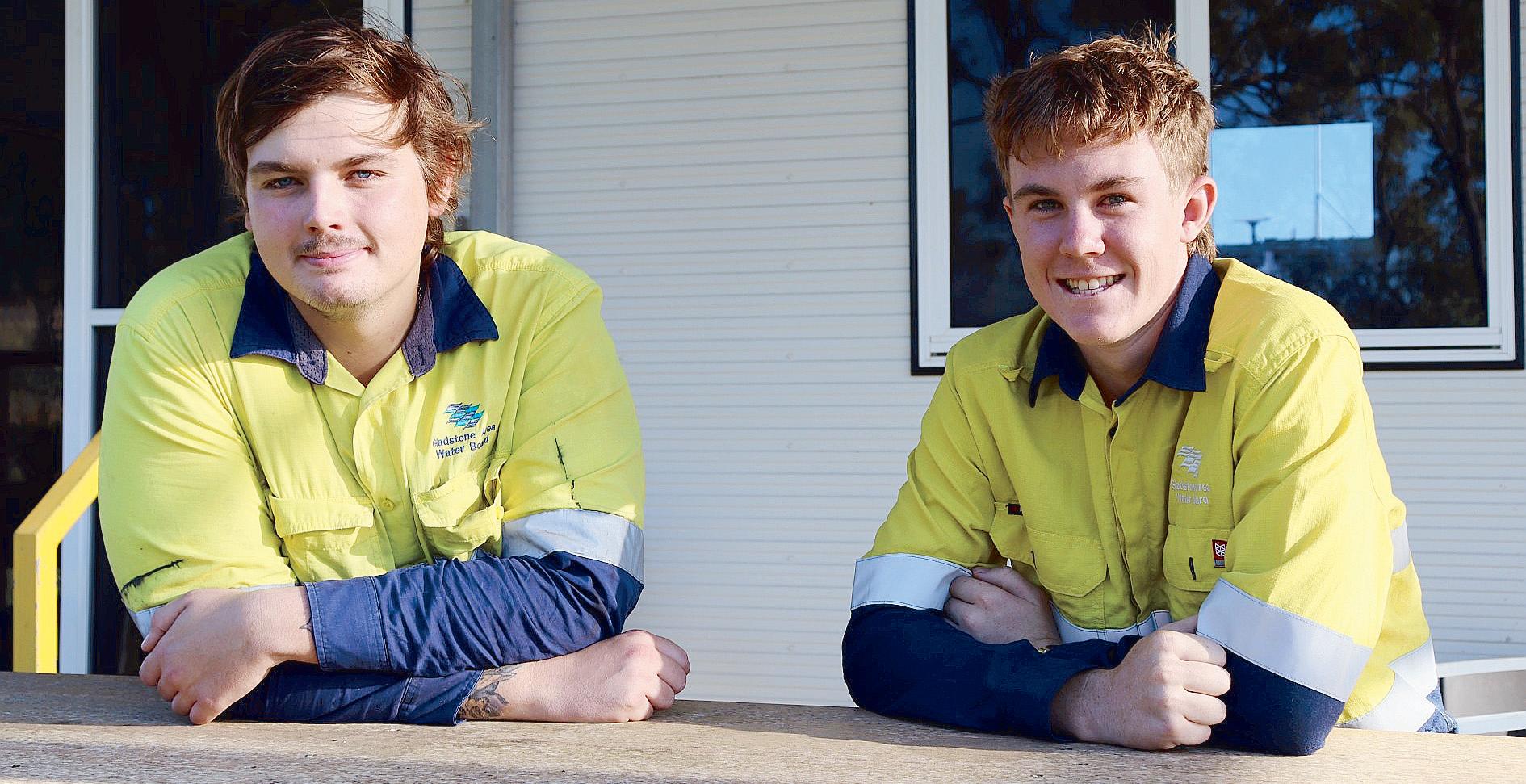
“I am excited for the future and what my career will become. It’s a surreal feeling to receive my electrical licence after five years of study and practice,” Morgen said.
“Completing my Capstone exam was the highlight of my apprenticeship, along with the day my live progress chart turned green, mean-
Ongoing donations of equipment from Glencore’s Hail Creek Open Cut coal operation are ensuring CQUniversity Emerald’s trade apprentices are acquiring relevant, work-ready skills.
In the last 12 months alone, Hail Creek Open Cut has donated four diesel engines to CQU Emerald, thanks to the ongoing partnership between the mining company and CQU metal fabrication teacher Andrew Abbas.
“The students and teachers are the major benefactors,” Mr Abbas said.
“These donated engines are industry current, safe for students to train on and are very versatile in terms of their capability for teaching and learning.”
Items donated by Glencore include:
• Three x CA18 Caterpillar engines
• One x CA15 Caterpillar engine
Mr Abbas said the engines are constantly in use by the students.
“The Caterpillar engines are extremely good for engine diagnostics, allowing faults to be incorporated, resulting in troubleshooting activities being performed by the students,” he said.
“These engines are very good for training on fuel systems, CATSIS, electronic diagnostics, engine rebuild, starting and charging systems, to name a few.
“As a secondary / VET teacher, I am extremely satisfied with the efforts of Hail Creek Open Cut to donate these engines for the ex-

press use of the students who train in the qualifications that these donations purpose.
“Glencore and CQU TAFE have been in partnership since 2005, and that partnership has been, without a doubt, a flagship allegiance.”
Hail Creek maintenance superintendent Dan Ryan said the donations highlight Glencore’s dedication to supporting local education initiatives and nurturing future talent.
“At Glencore, we are committed to delivering lasting social and economic benefits in the communities in which we operate,” Mr Ryan said.
“We are proud to support CQUniversity and its students through donations that help develop real-world skills, ensuring they are ready to thrive in the industry.”

ing my training was 100 per cent complete.
“My number one piece of advice for any new apprentice is to knuckle down and always ask for help. As a recent apprentice myself, it’s great to have Toby on board alongside our second-year apprentice, Zander.
“I was stoked to be offered a full-time posi-
tion when I completed my apprenticeship. It was an easy decision to stay at GAWB. The variety, getting out in the field, and working with instruments alongside great people is the highlight of my job.”
GAWB chief executive officer Darren Barlow said the organisation’s apprenticeship program provides real-world opportunities for young people in Gladstone while building a pipeline of qualified tradespeople.
“Our apprentices choose GAWB for the mentorship and exposure that comes with working in an experienced and committed team,” Mr Barlow said.
“Hiring dedicated recruits and fostering their career development ensures we always have the capacity to deliver safe and reliable water services to our customers and community.
“Congratulations to Morgen, and best of luck to Toby as he embarks on his journey alongside fellow second-year apprentice Zander Ramage.”
GAWB regularly offers apprenticeship and traineeship opportunities in areas such as electrical and instrumentation, land management, horticulture, and aquaculture.
These opportunities are advertised on the GAWB website (www.gawb.qld.gov.au) and via the organisation’s social media channels.
CS Energy has welcomed eight new apprentices and trainees at Callide and Kogan Creek power stations as part of its commitment to nurture the next generation of the energy industry.
The new recruits will gain practical skills and knowledge in their chosen fields, working alongside experienced industry professionals and completing nationally recognised training through TAFE or CQUniversity.
Five of this year’s cohort are based at Callide Power Station near Biloela and three at Kogan Creek Power Station near Chinchilla.
Electrical and instrumentation apprentice Kirsty Galea said she decided to apply for an apprenticeship at CS Energy because it offered a good mix of learning opportunities and work-life balance.
“There is so much that I look forward to learning. The thing I am looking forward to the most is getting on the tools and having those little wins when I complete a task, that I never thought I would be able to do,” Kirsty said.
Since starting at CS Energy, warehouse trainee Josh Gamato said he had gained an


Josh Gamato (warehousing trainee), Kirsty Galea (electrical and instrumentation apprentice), Ben Pike (mechanical apprentice) and Tom Wilson (mechanical apprentice) are welcomed by general manager Mick Hill. (Supplied)
insight into the important role CS Energy’s power stations played in Queensland’s power grid.
“I’m interested in learning how the warehouse supports the efficient operation of Callide Power Station and how supply chains work in the industry,” Josh said.

By Matthew Pearce
Central Queensland-based Senator Matt Canavan said while Donald Trump’s decision to impose a 10 per cent tariff on Australian goods isn’t great news for the country, there shouldn’t be panic in the beef industry either.
“We have a high quality product, great producers and a product that’s well in demand in the US,” he said.
“As the cattle herd there cannot supply US demand for beef, they will have to import and continue importing for years to come.”
Senator Canavan said he believed the tariffs would actually make Australian beef more competitive than Mexican and Canadian beef.
“I have no doubt we will be able to maintain our market share in the US market and maybe even grow it a little bit,” he said.
“The main thing is that we keep that strong market going and in my mind that also means being very careful about imposing any ‘internal tariffs’ on our sector.
“Because as much as there has been a focus on the external tariffs Australian beef will face from the US, we impose a huge amount of costs on our own cattle sector ourselves.”
Senator Canavan said the government had “lost control of our energy system” , putting an extra cost on many farmers.
“This government is bringing in a new
cattle reporting system that will require Australian cattle producers to spend millions of dollars to calculate the carbon emissions their cow herd produces every year,” he said.
“We don’t even produce fertiliser in this country any more, making it much more expensive for them to use chemicals like urea.
“Why don’t we concentrate on those things rather than losing our mind over tariffs imposed by a president that we do not and probably won’t be able to control?
“We do control a lot of things that would reduce costs for Australian beef producers and put them in an even more competitive position.”
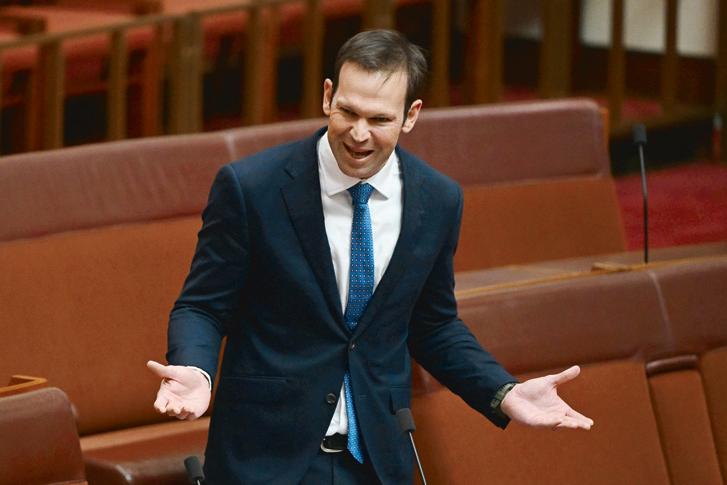
By Matthew Pearce and AAP
United States President Donald Trump’s decision to impose a 10 per cent tariff on Australian goods has sent shockwaves through the beef industry, but one Central Queensland cattle producer says new opportunities may also arise.
In his ‘Liberation Day’ speech, President Trump singled out Australia, partly because the government has banned imports of various American produce to prevent contamination and disease.
Uncooked American beef, in particular, has been barred since a mad cow disease outbreak in 2003.
“Australians ... they’re wonderful people, wonderful everything, but they ban American beef,” Mr Trump said.
“They won’t take any of our beef, they don’t want it because they don’t want it to affect their farmers.”
The US was Australia’s largest red meat export market in 2024 and was worth more than $6 billion.
US consumers could be forced to pay more, since Australian beef is in an estimated six billion hamburgers eaten every year in America.
David Hill, who runs a beef breeding and fattening operation at Clarke Creek and is a director on the AgForce Queensland cattle board, dismissed US comments about beef being “banned” , saying the US has had access to the Australian market under the Australia–United States Free Trade Agreement, provided they deliver equivalency with local standards.
“Traceability at times hasn’t been popular,” he said, noting the US couldn’t guarantee traceability standards.
“These are our standards and we believe they are the equal to anyone’s, not just at a producer level, but right through the beef supply chain in Australia.
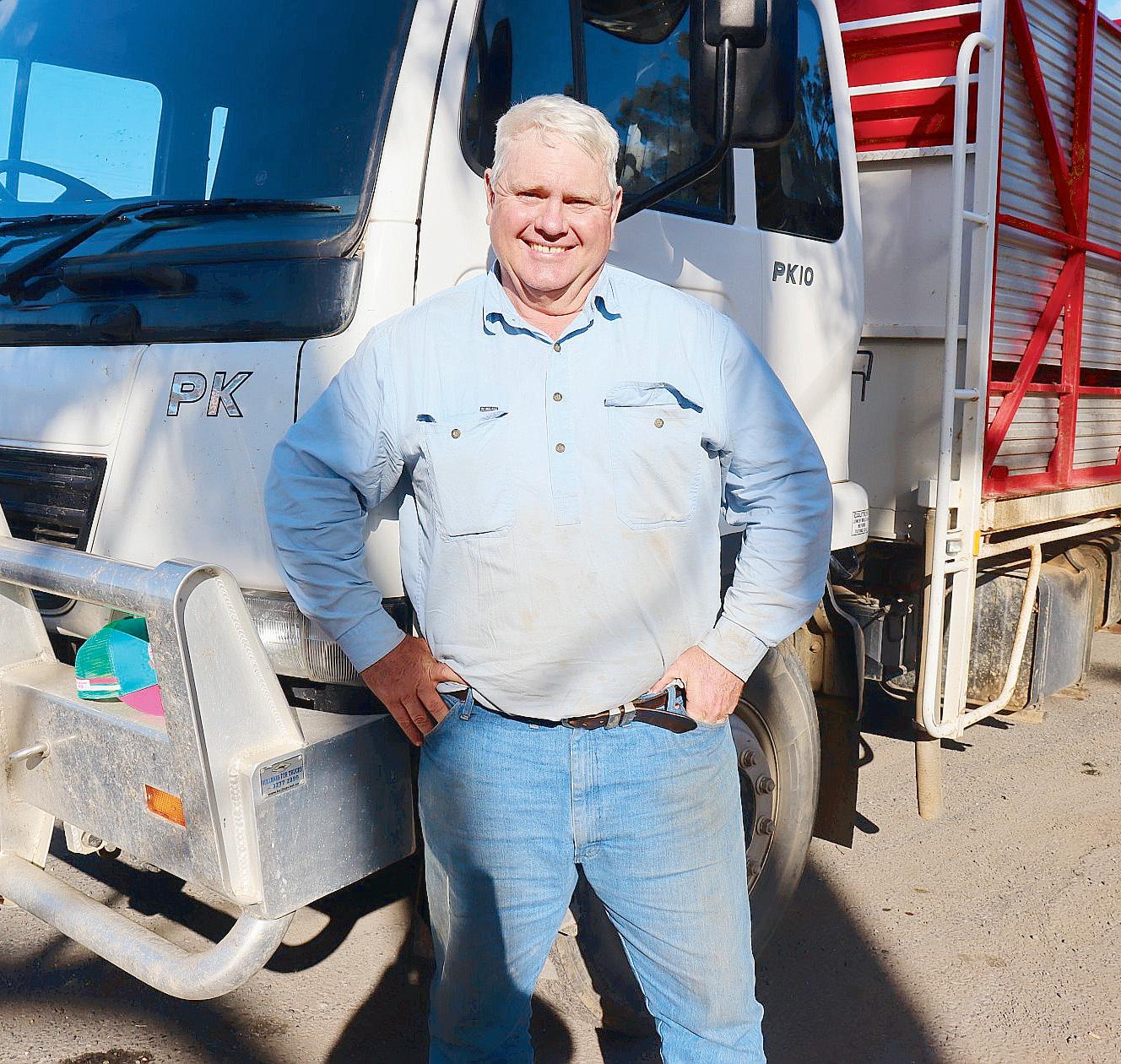
Mr Hill said AgForce appreciated the responses from both sides of government in Australia when it came to the tariffs.
Red Meat Advisory Council chair John McKillop said that while it was a relief Australian beef had not been banned from the US, the Red Meat Advisory Council was still disappointed with the tariffs.
The National Farmers’ Federation (NFF) also expressed its “profound disappointment” in the United States’ decision to impose a 10 per cent tariff on all Australian exports.
“This decision is a disappointing step backward for our nations and for the global economy,” NFF president David Jochinke said.
Mr Jochinke spoke with Prime Minister Anthony Albanese, outlining that the sector does not support the introduction of reciprocal tariffs and supports the government in standing firm in defence of Australia’s science-based biosecurity framework.
“The Australian agricultural industry supports a considered and measured approach to negotiations with the United States and will work closely with the Government and all sides of politics to seek a resolution to this issue,” he said.
“The NFF has long championed free and fair trade, not just for agriculture but all industries, recognising its role in global economic growth and stability. Australian agriculture is unwavering in its commitment to this.
“Australian producers are resilient in the face of challenges. Being among the least subsidised farmers in the world has seen the sector become highly efficient and productive.
happy with Mexican and Canadian beef being marketed as American beef and being exported as American when it is not?” he said.

























Mr Hill said the United States relied on imports from Mexico and Canada to bolster its herd.
“The numbers are way down in America, if you look at the actual breeding herd,” he said.
“How many of their farmers are actually
“Letting product into this country that doesn’t have equivalency with our product is not something that we have any appetite for at all.”

Mr Hill said while he “didn’t think the world would be in a better financial space” because of the tariffs, low US herd numbers could lead to opportunities for Australia.
“We may be able to pick up the gap in supply for them from other countries,” he said.
“While this decision creates unnecessary uncertainty, we remain confident in the strength of Australian agriculture. Our products are sought after worldwide for their quality, sustainability, and reliability.”
He said the NFF welcomed the government’s $50 million commitment to help affected sectors diversify markets and would seek clarity on how the funding will be delivered.













































































































































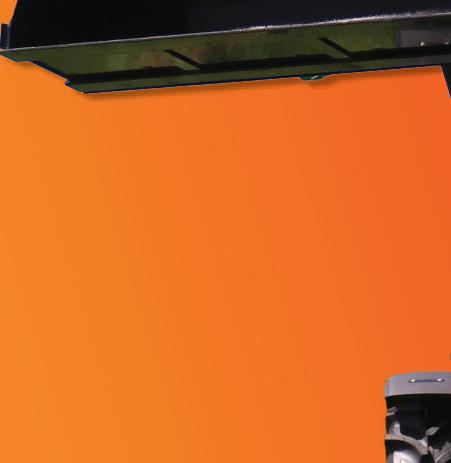

















CS Energy has announced a $1000 award for girls in Year 12 in the Banana Shire and North Burnett council regions who are studying Science, Technology, Engineering, and Mathematics subjects to support their pursuit of a tertiary education within a STEM field.
Callide Power Station general manager Mick Hill made the announcement at a recent Women in STEM event arranged by the Zonta e-Club of Queensland at Biloela High School.
The event was also attended by students from Moura State High School and Redeemer Lutheran College.
Mr Hill emphasised the importance of supporting young women as they embark on STEM careers, which have historically seen limited female representation.
“This award reflects our commitment to encouraging the next generation of talented women to thrive in STEM industries,” he said.
The Zonta e-Club of Queensland will be administrating the award, which is being sponsored by CS Energy for the third year.
“It’s really impactful for this award to come from a local employer like CS Energy, which has a number of women in STEM-related careers,” Zonta e-Club acting president Leanne Shepherd said.
“Women continue to be underrepresented

across various industries, with STEM remaining predominantly male-related fields.
“This award is a step towards bridging that gap by providing much-needed encourage-
The Clarke Creek Wind Farm has received its final oversize overmass (OSOM) delivery, marking a major milestone as the project moves towards completing all 100 wind turbines.
Since construction began, more than 1300 OSOM components have been transported from Gladstone Port to the wind farm, located 150km north-west of Rockhampton and 150km south of Mackay, on the land of the Barada Kabalbara Yetimarala (BKY) peoples.
Project director John Macchiusi said the successful delivery of these components was a testament to the team’s meticulous planning and execution.
“The team has safely managed more than 1000 deliveries from Gladstone Port, ensuring they arrived on time without disrupting the roads,” Mr Macchiusi said.
“This is no easy feat. The logistics involved in just one of these deliveries is enormous. Getting all 1300 components to site safely demonstrates the skill and dedication of the team in charge.
“We are now ready to knuckle down and finish building the 100 turbines, which will generate enough electricity to power around 330,000 Queensland homes and reduce carbon emissions by 738,000 tonnes annually.”
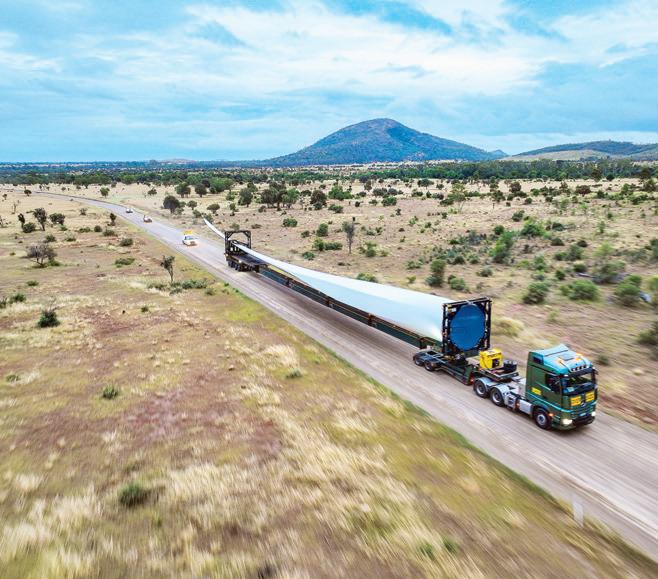
ment and support for young women pursuing their passions in STEM.”
Further information, including applications and selection criteria, is available through Zon-
ta e-Club of Queensland, at zontadistrict22. org/e-club-stem-award-open-soon Applications close on Friday 19 September 2025.
By Karen Simmons
This was no April fools on 1 April - Ergon Energy crews who choppered into Adavale, south of Isisford, to tackle power restoration found a gaggle of poddies that had somehow survived the floodwaters.
Amid the heartbreak and devastation, a little bright spot of hope and survival came out and met the team.
Ergon Energy contacted the property owner, who walked them through where to find the milk mix and bottles and Damian from the Charleville depot commenced feeding duties.
An Ergon spokesperson said they were happy to report the calves are doing well, and Adavale’s power restoration is also well underway.
“Overnight on (Monday, 31 March) rising floodwaters forced us to de-energise Thargomindah,” Ergon posted to social media.

The project team has now installed 78 wind turbines, surpassing the three-quarter mark. With commissioning and testing well underway, up to 30 turbines are already operating simultaneously, generating 132MW of power.
Squadron Energy remains on track to complete all 100 turbines by mid-year.
Stage One of the Clarke Creek Wind Farm has created 350 jobs during construction and contributed $110 million to the regional economy.
Deliveries, which took place overnight with police escorts where required, departed the Port of Gladstone between 11.30pm and 1am and arrived at the site between 5am and 7am.
“This is always a last resort which is done for safety, and we’ll be back in the community restoring power as soon as it’s safe to do so.
“Elsewhere, we’re hard at it in Jundah, where the local power station was completely swamped, and we’ve been flying in generators and crews to support critical infrastructure.”
Electrical advice when returning to properties:
• Watch for powerlines in floodwaters and treat any fallen wire as live and dangerous – report anything you see to 13 16 70 or 000, stay well clear, and warn others.
Gladstone’s mining and green energy boom has been touted as decisive factors behind the Harbour City featuring highly on the latest Regional Movers Index (RMI) report.
The RMI is a partnership between the RAI and Commonwealth Bank of Australia, which analyses quarterly and annual trends in people moving to and from Australia’s regional areas.
The December 2024 quarterly report signified a change in mover preferences, with communities such as Queensland’s Sunshine Coast, which has been the nation’s most popular regional mover destination for nine consecutive quarters, gradually reducing its share of net internal migration.
CBA’s Regional and Agribusiness Banking acting executive manager Josh Foste said while the Sunshine Coast remained a firm favourite, other communities across Queensland like Gladstone and Mackay are gaining movers.
“The lure of the Sunshine State has long attracted both city and regional movers, with the latest RMI proving the appeal of a scenic and often more balanced lifestyle extends beyond metropolitan areas, bringing renewed economic and social benefits to other areas of the state,” Mr Foster said.
“This quarter saw the rise in popularity of several new growth hotspots within regional Queensland, demonstrating the diversifica-
tion of the state’s economy.
“Gladstone’s mining and green energy boom are just some of the sectors helping drive increased employment opportunities to these regions.
“With lower-than-average employment rates and limited housing supply, more investment is needed in construction, manufacturing and property development to support these growing communities.”
Mr Foster said continued development in roads and transport infrastructure were integral to improving accessibility to these thriving regions and offering businesses a commercial opportunity to expand or relocate beyond major metro areas.
• Use generators with extreme care.
• Don’t use water-damaged appliances.
• Properties that have been inundated will need to be made electrically safe by a private sparkie before we can safely restore network supply.

Over the past three months, CapRescue has responded to 16 missions across the vast 11,000 km² of Livingstone Shire, ensuring emergency care reaches even the most remote areas.
While many associate the region with its picturesque beaches and coastline, CapRescue’s work extends far beyond the shore. From the islands to inland communities where medical assistance can be hours away by road, the aeromedical service plays a critical role in delivering life-saving care.
Recent missions have taken crews to Great Keppel Island and Shoalwater Bay, as well as remote locations such as Sandringham, Ogmore, Marlborough, Mt Gardiner, Couti Outi, and Kunwarara. Each response underscores the vital work of the service, ensuring patients in distress receive the urgent care they need, no matter where they are.
Among the recent cases, CapRescue following an incident involving cattle and responded to multiple vehicle crashes—including one where a missing
Powerlink Queensland is proud to be announced as a Blue Sky Partner of CapRescue for the next three years.
commitment to safety through investing in the critical care provided by the community-based organisation in Central Queensland.
Powerlink General Manager of Communications, Customer and Engagement Gerard Reilly recognised the challenge of regional Queenslanders having access to rapid response medical care.
CapRescue has recently unveiled a fresh new look with updated hangar signage, marking another milestone in the service’s proud history. More than just an aesthetic upgrade, the new sign is a symbol of CapRescue’s journey since its
While this side of the building isn’t typically seen by the public, to the crew it’s a familiar sight that says, “You’re home.” At the end of a long shift—it’s a simple yet powerful reminder that they’ve made it back safely.
the update his seal of approval with a big thumbs-up. The refreshed branding represents more than just a name—it the entire CapRescue team to serving Central Queensland. As they look ahead to 2025 and beyond, the service remains ready to respond at a moment’s notice, standing strong under the CapRescue

motorist was located and assisted after a bushland search. The service has also provided critical care for patients
burns, and other medical emergencies requiring immediate intervention.
These missions highlight the importance of having a dedicated aeromedical service capable of covering the entire region. Whether it’s a medical emergency on an island, a serious crash on a remote property, or an accident deep in the bush, CapRescue remains ready to respond—because in a region this big, every second counts.
“Safety of the community – and our people – is in Powerlink’s DNA,” Mr Reilly said.
“We recognise the importance of regional Queenslanders having access to a free state-of-the-art medical service.
“With our ever-growing presence in Central Queensland, this partnership communities we operate in.
“We are proud to come on board as a Blue Sky sponsor of CapRescue for the next three years.”
CapRescue serves more than 300,000 people across an area of 350,000 square kilometres.
CapRescue’s two helicopters rapidly deploys medical and rescue teams to major crashes, workplace incidents, disaster response and other urgent medical responses, 24 hours a day, every

banner and prepared to be there when it matters most.




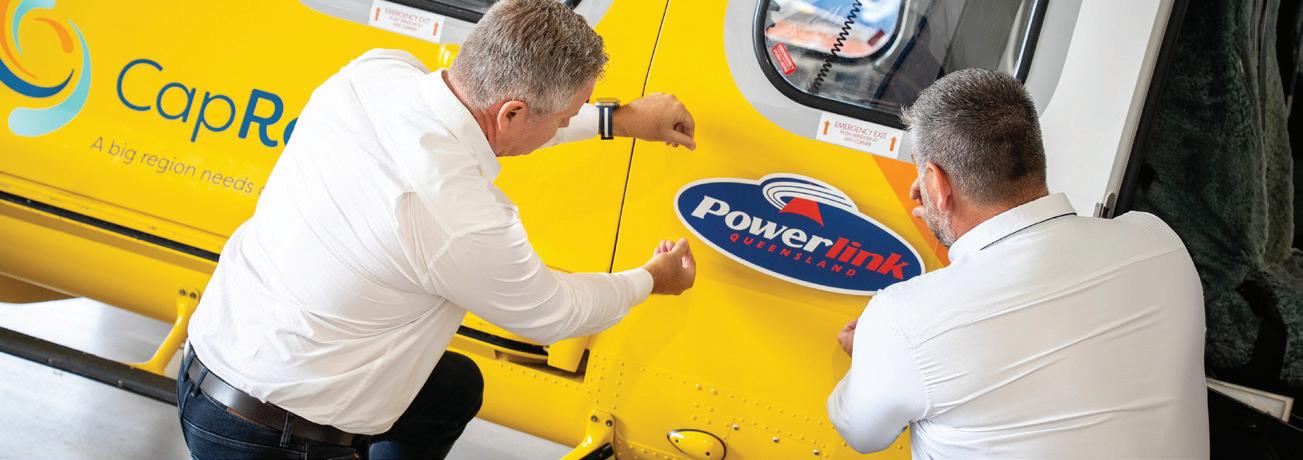
day of the year.
CapRescue CEO Darren Pirie expressed gratitude to Powerlink as a Blue Sky Partner.
“We’re incredibly grateful to Powerlink Queensland for their generous support as a Blue Sky Partner,” Mr Pirie said.
“This partnership is instrumental in ensuring our crew can continue delivering lifesaving care across Central Queensland.
“Powerlink’s strong focus on safety in their commitment, helping to ensure CapRescue is there when people need us most.”
CapRescue is a community based, not world-class aeromedical service to Central Queenslanders.
To donate and ensure CapRescue are



By Matthew Pearce and Gregor Mactaggart
The Federal Government will inject $188 million to begin Bruce Highway upgrades between Benaraby and Rockhampton.
The funding is part of a $9 billion joint Federal and State Government Bruce Highway Safety Package announced last month.
Federal Infrastructure and Transport Minister Catherine King was joined by State Transport and Main Roads Minister Brent Mickelberg to announce an initial $300 million in early works and planning for 16 new projects between Gympie and Innisfail.
Commonwealth funding has also been released to kick off early Beef Roads works ($38 million) and $37 million to start upgrading sections of the Capricorn Highway.
Ms King highlighted the bipartisan support between Federal Labor and the State LNP during the announcement in Rockhampton.
“I thank my state counterpart Brent Mickelberg … this is a great partnership on the Bruce Highway,” Ms King said.
“Back in January, Prime Minister (Anthony) Albanese and I announced the $7.2 billion to fix the Bruce after a significant campaign by the RACQ.
“Enough is enough — it’s time to fix this road. That’s why we’re working with the Queensland Government to make it happen.
“These projects are in high-risk areas north of Gympie, where conditions are poor. Safety upgrades will go a long way.”

Mr Mickelberg, who was in the Beef Capital for the latest Bruce Highway Advisory Council meeting, agreed the time for action was now.
“There’s 16 projects up and down the Bruce Highway,” he said.
“This is about getting on with the job in areas where the design work is already done.
“I’m very pleased the Australian Government has come to the party, providing 8020 funding for this $9 billion package on the Bruce Highway.
“It’s a welcome investment and a recognition that we need to invest in this critical road for Queensland’s future.
“We know there’s an urgent need — things like turning lanes off and onto the Bruce Highway, wide centreline treatments, shoulder widening, and addressing damaged pavement.
“These are projects we can start delivering immediately, and we already have workers on-site getting the job done.”
Mr Mickelberg said the advisory council

would now consider how best to allocate the remaining $8.7 billion.
“Extensive work is needed along the length of the Bruce Highway,” he said.
“Countless people are committed to ensuring the Bruce Highway is safer, more resilient, and more reliable.
“This meeting will determine the best way to roll out these funds, after which the Federal and Queensland governments will work together to start construction as soon as possible.”
By Matthew Pearce
MPs Glen Kelly and Sean Dillon couldn’t be happier that the Federal Government has released $38 million to start early works on the Central Queensland Beef Roads project.
The Beef Roads are a strategic road network covering 218,000 square kilometres, supporting the movement of around $1.7 billion in freight and agricultural produce each year from inland areas to saleyards, processing facilities, and ports across the region.
The network also supports other industries such as tourism, critical minerals, and renewable energy.
The $500 million project is being jointly funded by the Federal and State governments, with the Federal Government contributing $400 million and the State Government providing the remaining $100 million.
Projects in the early works package have been identified in partnership with local councils and industry stakeholders and will address immediate needs by sealing and widening sections of the network to provide all-weather access, improve productivity, and enhance safety.
The package includes upgrades for 7.6km of May Downs Road in Mr Kelly’s Mirani electorate, which sees heavy traffic from two feedlots on the Marlborough-Sarina Road supporting 50,000 head of cattle.
“This development package is very important to the electorate of Mirani because of the amount of produce that does come out of there, whether it be beef or grain,” he said.
Construction on the early works package is expected to start in mid-2025 and be completed by mid-2027.
Mr Kelly said he also looked forward to working with local councils, industry stakeholders, and the State Government on a 10-year investment strategy being developed for the Beef Roads project to identify short-term, mediumterm, and long-term priorities and guide future investment decisions in consultation.
The investment strategy is expected to be completed in mid-2025.
“I’m a big believer that a little bit of time goes a long way because we only want to do these things once,” he said.
Federal Minister for Infrastructure, Transport, Regional Development and Local Gov-


ernment Catherine King said releasing the $38 million would allow work to start on a range of projects, small and large, across the road network.
“We know that increasingly, our large freight vehicles are travelling on these local roads, and weather, combined with the weight of vehicles and the volume of vehicles, is causing erosion on those roads,” she said.
Mr Dillon, who represents Gregory, said the project recognised the significance of this freight route to the national economy.
“The Beef Road corridors form a web of agricultural supply chains, stretching across an area of nearly 218,000 square kilometres,” he said.
“They support the movement of a worldclass beef product, contributing more than $1.7 billion to the Australian economy.
“This project will improve road safety for all users, reduce impediments to delivery, and reduce maintenance costs for heavy vehicle fleets.
“Upgrading these roads is paramount to supporting these users. I have been championing long and hard for these upgrades, spanning back to when I was Barcaldine Regional Council
Mayor, and I am excited to see work start.”
Mr Dillon said that in the Gregory electorate, the early works package would include upgrading 5.7km of the Clermont-Alpha Road, 4.8km of the Fitzroy Developmental Road, and 5.7km of the Alpha-Tambo Road.
State Minister for Transport and Main Roads Brent Mickelberg called the Beef Roads plan a “tremendous initiative” that brought together local councils, the State Government, and the Federal Government.
“It’s a really important project that will boost capacity for the beef industry, but it’s also about building resilience and capacity into those regional interconnecting roads between Moranbah and Emerald and Rockhampton and to the south,” he said.
“These are critical roads that should have been invested in, that need to be invested in, to unlock productivity from an economic perspective, but also to connect regional communities.”
A ground-breaking mining innovation developed in the Bowen Basin is set to hit the global stage after receiving key support from the Queensland Government.
Ausroad Blast Technology (ABT), a subsidiary of The Ausroad Group, has been awarded a grant through the METS Collaborative Project Fund to fast-track the commercialisation of its Metron technology.
Developed and trialled in the Bowen Basin, Metron is designed to improve safety, productivity and data accuracy in drill and blast operations.
The successful applicant is an Australian company with strong regional ties, including a maintenance facility in Moranbah.
“We are thrilled to receive this grant, which recognises Metron’s potential to drive innovation in the global mining sector,” ABT director Stefan Dunlop said.
“The Queensland Government’s METS Collaborative Project Fund demonstrates the government’s commitment to supporting cutting-edge technologies that can make a real difference in the resources sector.”

“The grant will enable us to accelerate Metron’s path to market, delivering clear benefits for the industry.
“Our collaboration with industry and academic partners has been instrumental in shaping Metron, and we look forward to continuing this partnership to refine and commercialise the technology.”
Mr Dunlop emphasised the significance of Metron’s impact on the industry.
“By introducing advanced technology into this traditionally low-tech task, we’re addressing safety concerns and operational inefficiencies, providing mining teams with reliable, actionable data,” he said.
“This has the potential to transform drill and blast operations—reducing manual labour, improving safety, and providing accurate data to inform blast design.”
In a successful January trial, Metron exceeded key performance indicators in a live blast environment.
The funding will now support final refinements, integration with other products, and preparations for market launch.

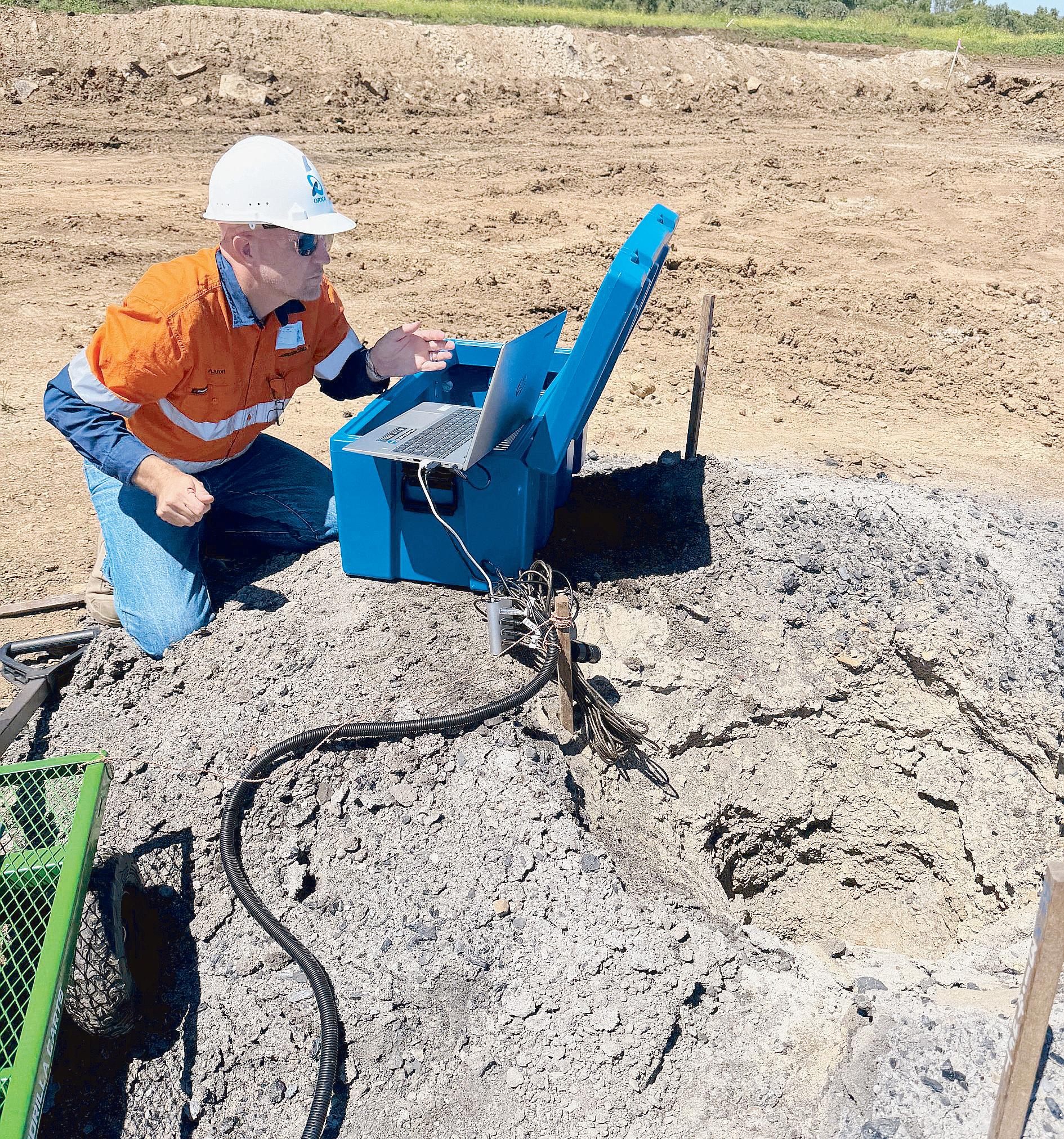
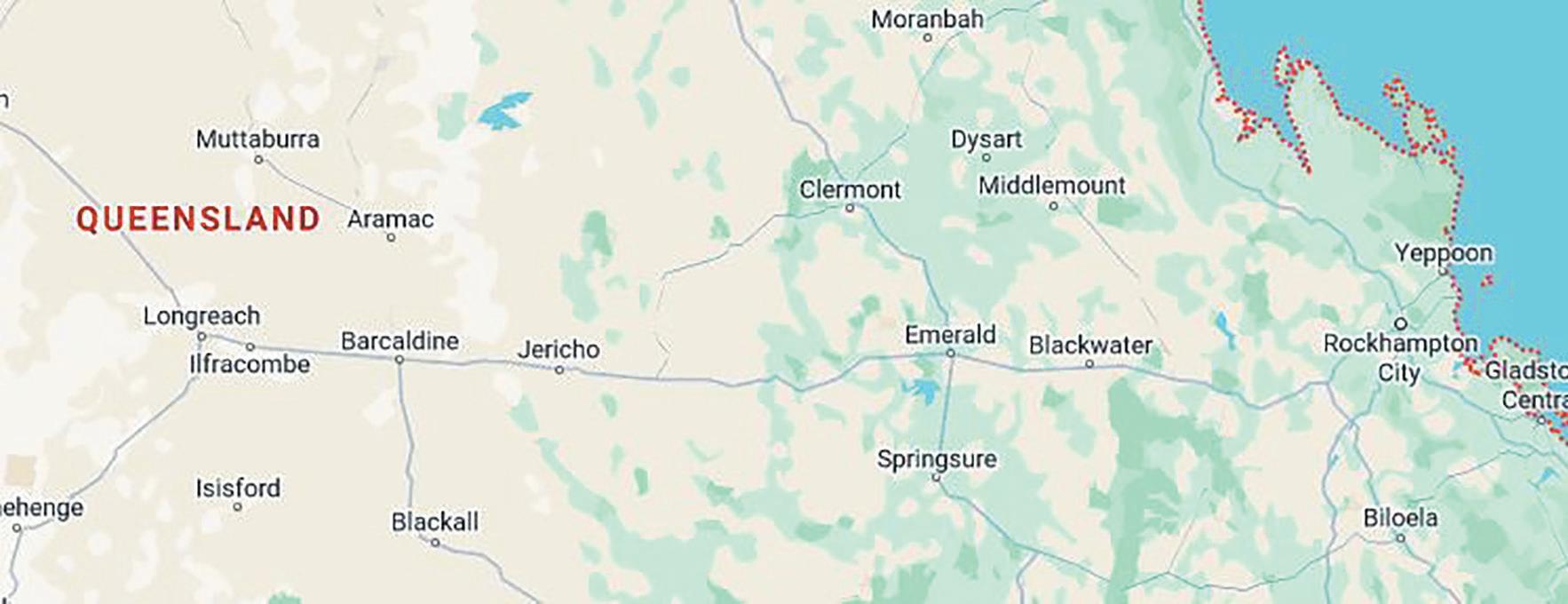
By Sophie Mossman
CQUniversity continues to pave the way for industry with their first GrowHer event to encourage more women to choose a career in agriculture.
At present, only about 30 per cent of employees in agriculture are female, and even fewer are in management and board positions, despite the workforce becoming more diverse over the last 10-15 years.
More than 50 young female high school students from 14 Central Queensland schools were invited to the Central Queensland Innovation and Research Precinct (CQIRP) at the North Rockhampton Campus earlier this month to learn more about agricultural technology and how it is shaping the industry now and into the future.
Students were taken on a tour of the campus, connected with AgTech leaders, and learned how digital innovations are shaping agriculture.
CQU director of the Institute for Future Farming Systems Amy Cosby said this was the first event they have hosted of this kind, and it was a big success.
This program is also hosted in Townsville and Toowoomba.
“The idea is to advance female founders, so to get them really interested in AgTech, the jobs and careers, and solving agricultural problems,” Dr Cosby said.
“Whilst their teams and their pitches were with their classmates, they were in groups throughout the day networking, meeting other young women from different backgrounds, learning about them, and integrating all sorts of ideas.”
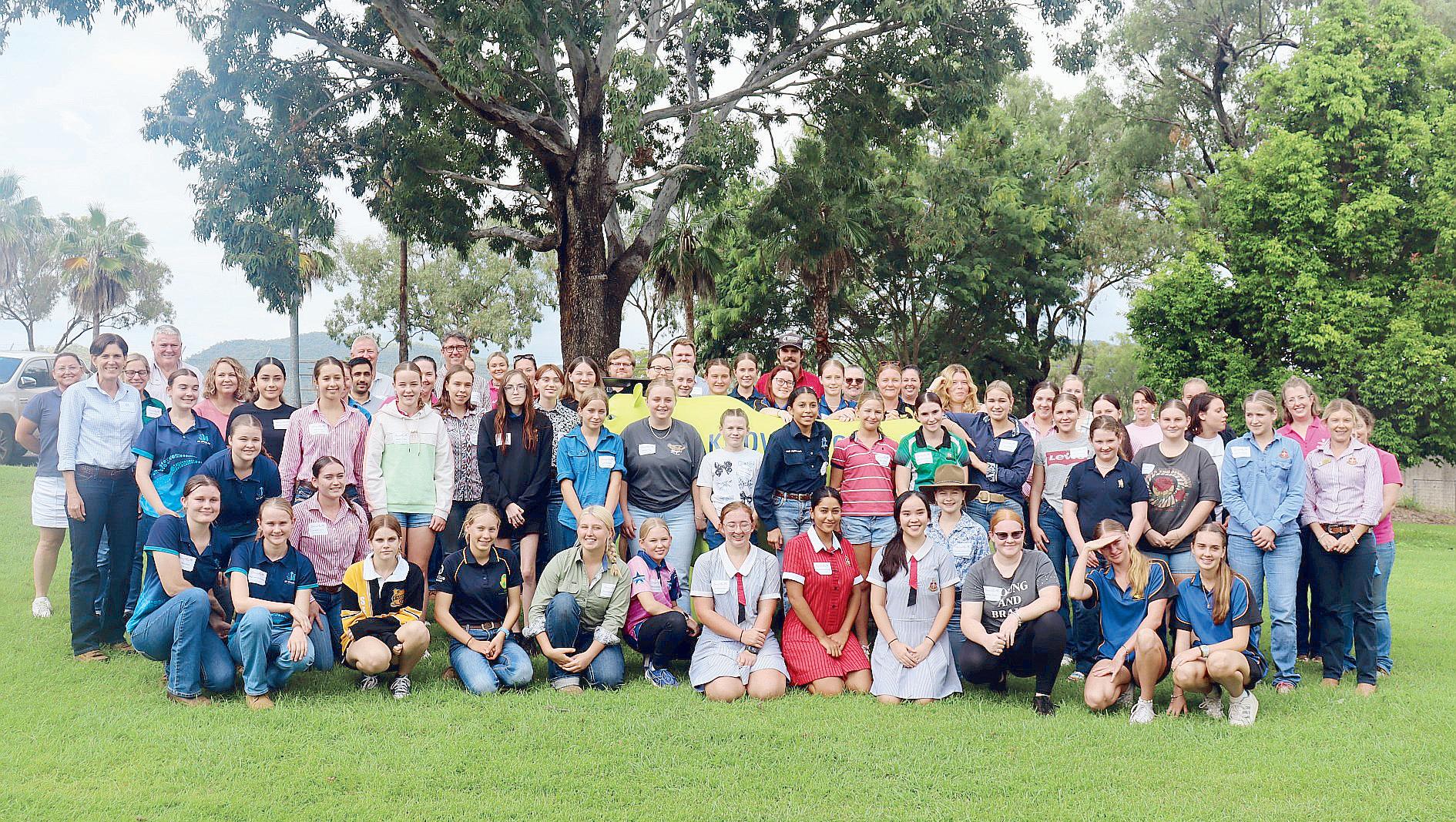
After collaborating with their mentors from local businesses involved in the industry, each team presented a pitch to remedy a problem within the industry.
A member of the winning team from Rockhampton Grammar School Lalita Roopnarinesingh said it was a great opportunity to learn more about something she has a vested interest in.
Lalita hopes to study Agribusiness and Agriscience at UQ Gatton after she graduates.
“Getting to learn about all these new things that I’ve never heard about before, like how there’s a thousand different products for thousands of different things, I thought that was very interesting,” she said.
From here, this team will go on to represent GrowHer at an innovation event later in the year.
CQU thanked their partners, the mentors, and the participants for making this event possible.
“I don’t have a rural background myself, but I’ve been out to one of my friends’ properties, whose parents are cattle farmers, and they let me come out to their property to help muster with them, which has really helped me understand the cattle industry specifically.”
Global urea supplies currently sit in a fragile state, with several key suppliers exporting lower volumes year-on-year, which creates a “ripple effect” for available volumes for Australian fertiliser importers, Rabobank has highlighted in a new report.
The agribusiness banking specialist says urea is by far the most widely-traded fertiliser in the world and, for Australia, represented nearly half (46 per cent) of total fertiliser imports in 2024.
In the report:’ What tight urea supplies mean for global prices and Australian farmers’ , the bank’s RaboResearch division says due to minimal volumes of urea produced domestically, Australia is particularly sensitive to global events.
Report author, RaboResearch farm inputs and commodities analyst Paul Joules said the urea market is expected to remain volatile due to complex supply chains and geopolitical influences, with prices elevated compared to historical averages.
“Ongoing supply issues in key exporting regions and the sensitive nature of natural gas markets – the predominant feedstock for urea production – suggest that urea prices will likely stay high,” he said.
Mr Joules said given complex supply chains, urea prices tend to trade with considerable volatility.
“At present, prices are trading around the five-year average. However, if we were to compare current prices with the pre-RussiaUkraine war five-year average price, they are 40 per cent higher,” he said.
“The sensitivity of natural gas markets – to both weather and geopolitical events – adds to the volatility of urea prices.”
The RaboResearch report said while the majority of the chief urea-producing regions and countries (Europe, Iran, Egypt and China) that are experiencing supply issues do not directly supply Australia, “they still account for global losses to the supply, which creates
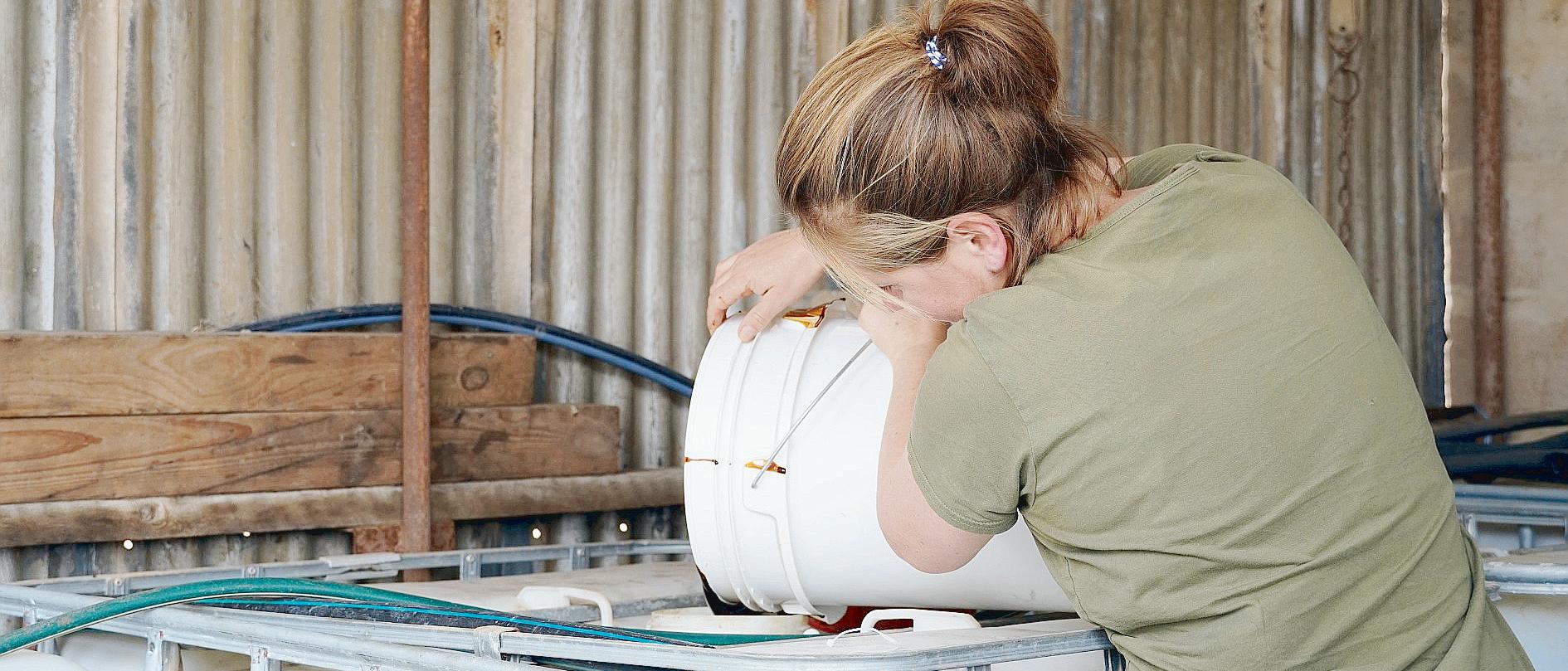
a ripple effect for available volumes for Australian importers”
In 2024, 79 per cent of Australian urea imports came from the UAE, Saudi Arabia, Qatar, Indonesia and Oman.
Mr Joules said although global supply and demand factors will continue to influence Australian urea prices, the other major impact is foreign exchange rates.
“The bank expects the strong outlook for the US dollar is likely to keep the AUD weak in 2025,” Mr Joules said.
“RaboResearch anticipates the Australian dollar to remain relatively weak, with the cross expected to reach 0.65 on a 12-month view. Ultimately, for urea – and other imported goods – this means farmers will most likely continue to face a currency headwind throughout 2025.”
The report said 3.85 million tonnes of urea was imported into Australia in 2024 (which represents over 90 per cent of its usage) –making it by far the most imported fertiliser locally.
Mr Joules said the local farm-inputs sector is questioning whether Australia can successfully reduce its import dependence via local urea production in the near future.
“Two of the most promising projects are planned in South Australia and Western Australia. Assuming these projects were both to go ahead, that would mean production would total 3.3 million tonnes – 0.55 million tonnes behind Australia’s total imported volume of urea in 2024.”
However, Mr Joules said, it is unlikely Australia would switch from relying largely on imported to volumes mainly on domestic supplies in the near future.
“This is due to the economics of internal shipping versus international exports,” he said.
“Freight costs from South Australia and Western Australia to agricultural regions in other states are high and, from a urea producer’s standpoint, shipping at least some volumes overseas – via well-established international shipping networks – would likely be viewed as the most economically-viable option.
“At certain times of the year, high demand from South-East Asia and India could potentially absorb a sizeable amount of any Australian-produced volume, and it may well make more economic sense to export volumes abroad, as opposed to shipping to parts of Australia which are far away from the proposed plants.”